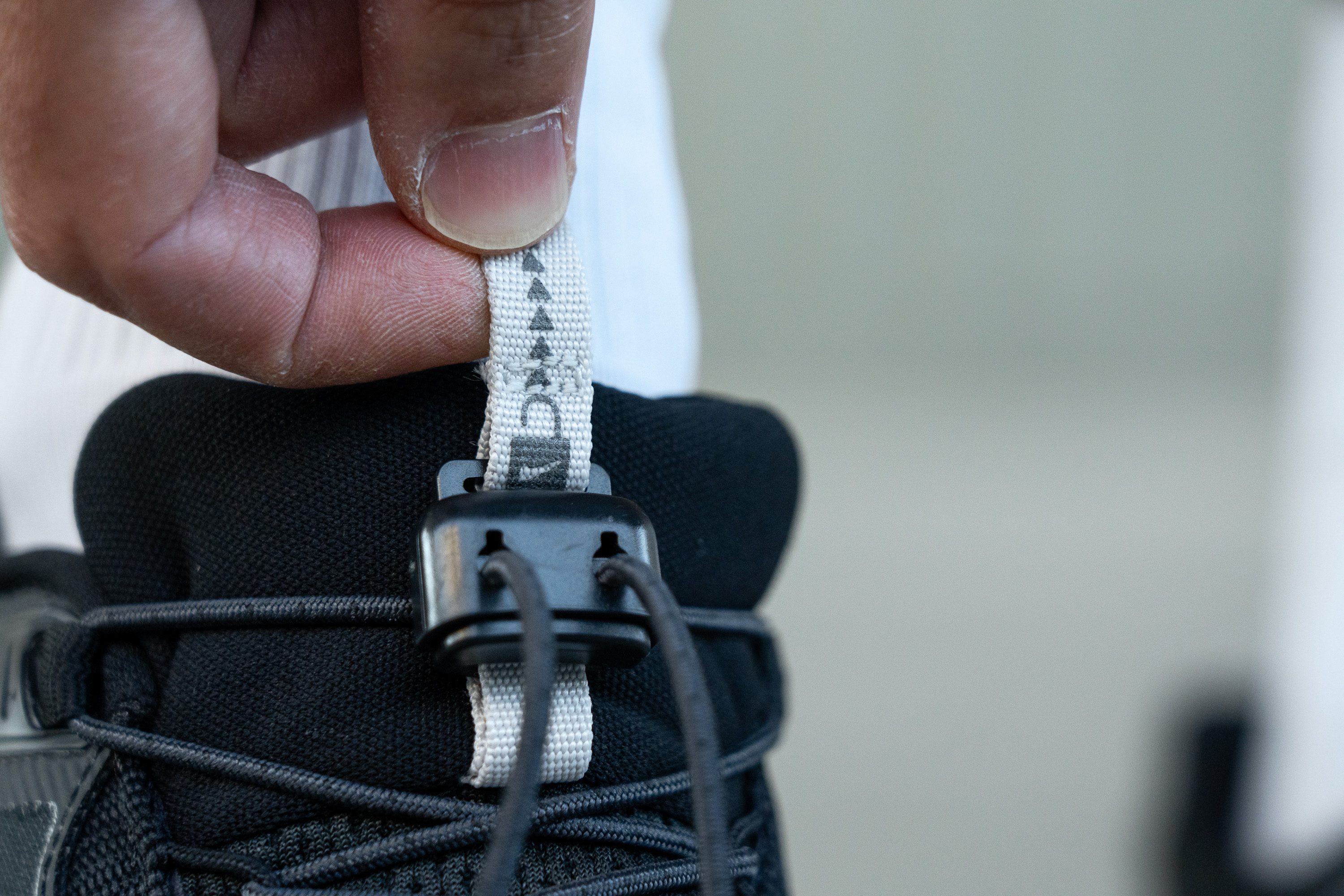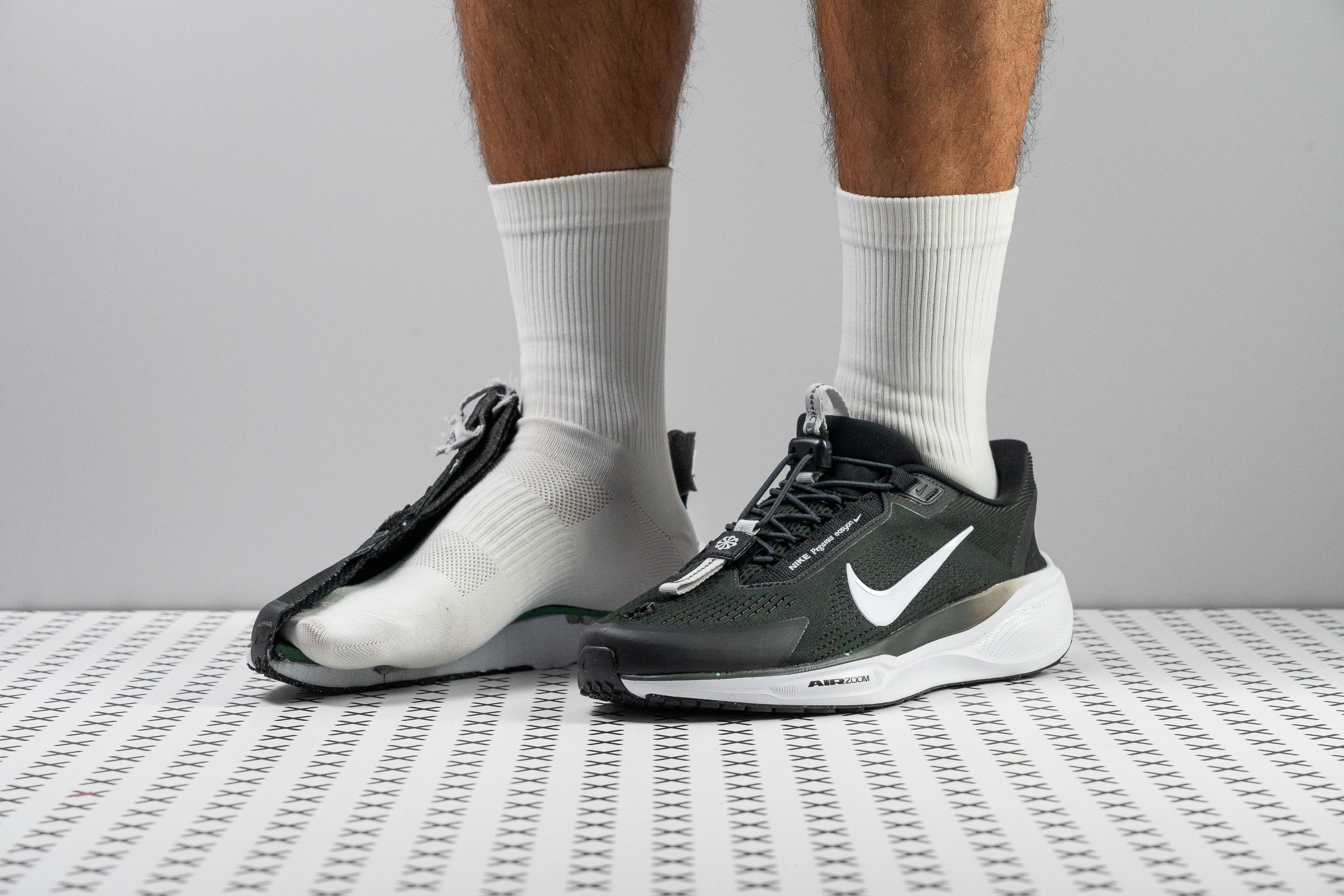Our verdict
Pros
- Fast-entry EasyOn system
- Convenient one-hand elastic laces
- Improved ReactX midsole
- Exceptional breathability
- Air Zoom units for more bounce
- Triathlon-friendly
- No price increase from Pegasus 41
- Amazing as a lifestyle shoe
Cons
- Stability reduced by EasyOn design
- Low toebox durability
- Tapered toebox
Audience verdict
Comparison
The most similar running shoes compared
+ + Add a shoe | |||||
|---|---|---|---|---|---|
| Audience score | 83 Good! | 81 Good! | 88 Great! | 81 Good! | |
| Price | £130 | £90 | £130 | £130 | |
| Pace | Daily running | Daily running | Daily running | Daily running | |
| Arch support | Neutral | Neutral | Neutral | Neutral | |
| Weight lab Weight brand | 10.1 oz / 286g 10.4 oz / 295g | 9.7 oz / 274g 10 oz / 283g | 9.9 oz / 281g 10 oz / 283g | 10.8 oz / 305g 10.8 oz / 307g | |
| Drop lab Drop brand | 11.6 mm 10.0 mm | 12.5 mm 9.0 mm | 11.4 mm 10.0 mm | 11.5 mm 10.0 mm | |
| Strike pattern | Heel | Heel | Heel | Heel | |
| Size | True to size | True to size | True to size | True to size | |
| Midsole softness | Soft | Balanced | Soft | Soft | |
| Difference in midsole softness in cold | Normal | Small | Normal | Small | |
| Toebox durability | Bad | Good | Decent | Decent | |
| Heel padding durability | Good | Good | Good | Good | |
| Outsole durability | Decent | Bad | Good | Good | |
| Breathability | Breathable | Breathable | Moderate | Breathable | |
| Width / fit | Medium | Medium | Medium | Medium | |
| Toebox width | Medium | Medium | Medium | Wide | |
| Stiffness | Stiff | Stiff | Flexible | Flexible | |
| Torsional rigidity | Moderate | Moderate | Flexible | Flexible | |
| Heel counter stiffness | Stiff | Moderate | Stiff | Stiff | |
| Heel lab Heel brand | 33.6 mm 34.0 mm | 30.7 mm 25.0 mm | 33.6 mm 37.0 mm | 27.6 mm 22.0 mm | |
| Forefoot lab Forefoot brand | 22.0 mm 24.0 mm | 18.2 mm 16.0 mm | 22.2 mm 27.0 mm | 16.1 mm 12.0 mm | |
| Widths available | Normal | Normal | NormalWideX-Wide | NormalWide | |
| Orthotic friendly | ✓ | ✓ | ✓ | ✓ | |
| Season | SummerAll seasons | SummerAll seasons | All seasons | SummerAll seasons | |
| Removable insole | ✓ | ✓ | ✓ | ✓ | |
| Ranking | #266 Bottom 27% | #288 Bottom 21% | #130 Top 36% | #292 Bottom 20% | |
| Popularity | #199 Bottom 45% | #323 Bottom 12% | #11 Top 3% | #289 Bottom 21% |
Who should buy
The Pegasus EasyOn variant is an excellent choice for:
- Those who dislike tying and untying laces, as EasyOn streamlines the process, making it faster and more convenient.
- Individuals with disabilities who need a lacing system operable with one hand.
- Triathletes seeking a single shoe for both training and racing, prioritising ease, cost, and convenience over peak performance.
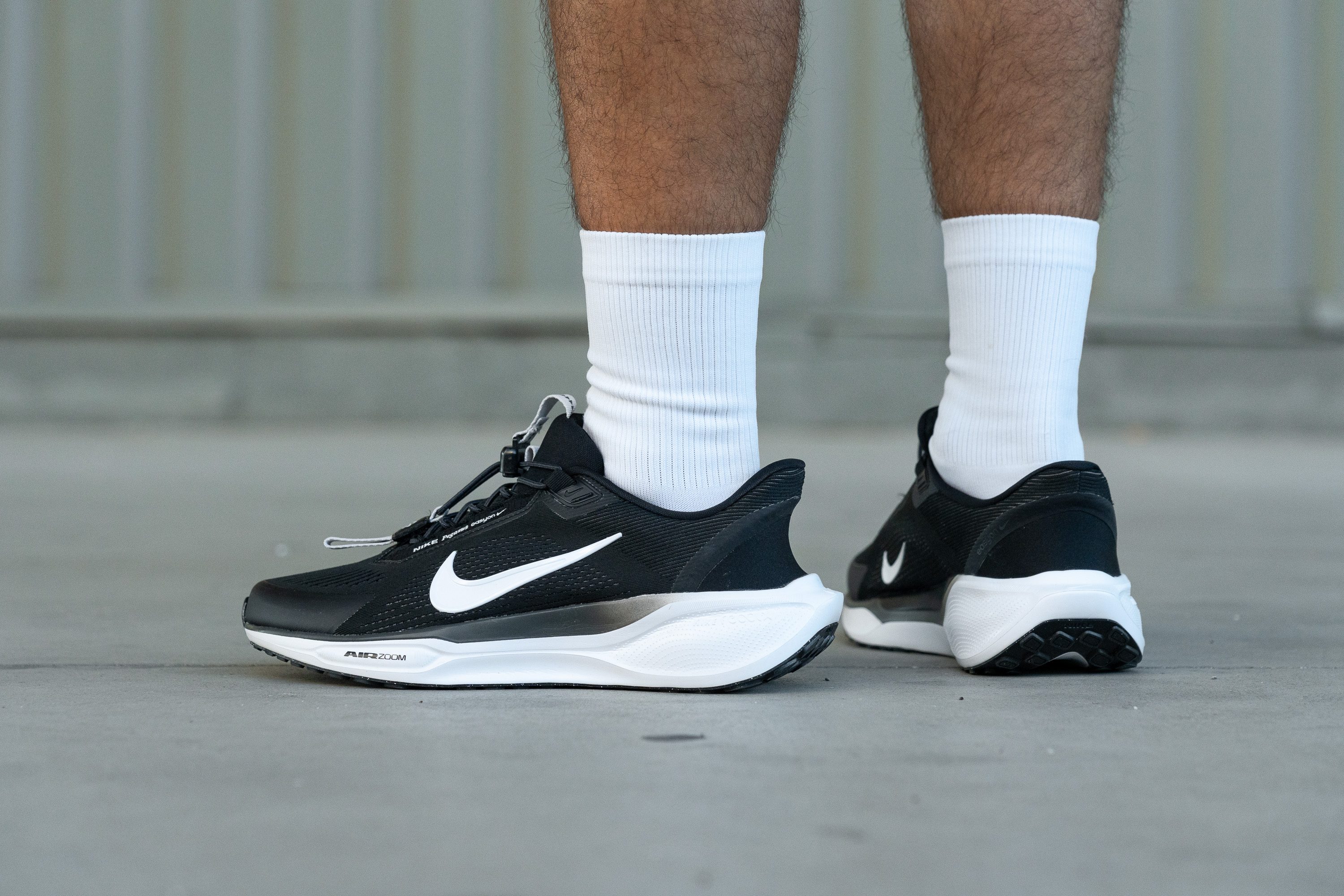
Who should NOT buy
We believe that runners seeking a traditional lacing system or who aren’t particularly interested in the EasyOn feature should look elsewhere. In our view, the EasyOn design detracts slightly from stability and adds a bit of weight, making the regular Pegasus 41 or Hoka Mach 6 better choices for daily mileage.
Additionally, we think the Pegasus EasyOn may be less appealing to casual runners or those simply wanting a lifestyle shoe. If that’s you, the Nike Revolution 7 EasyOn offers the same easy-entry technology at a much lower price, making it an ideal wallet-friendly alternative.
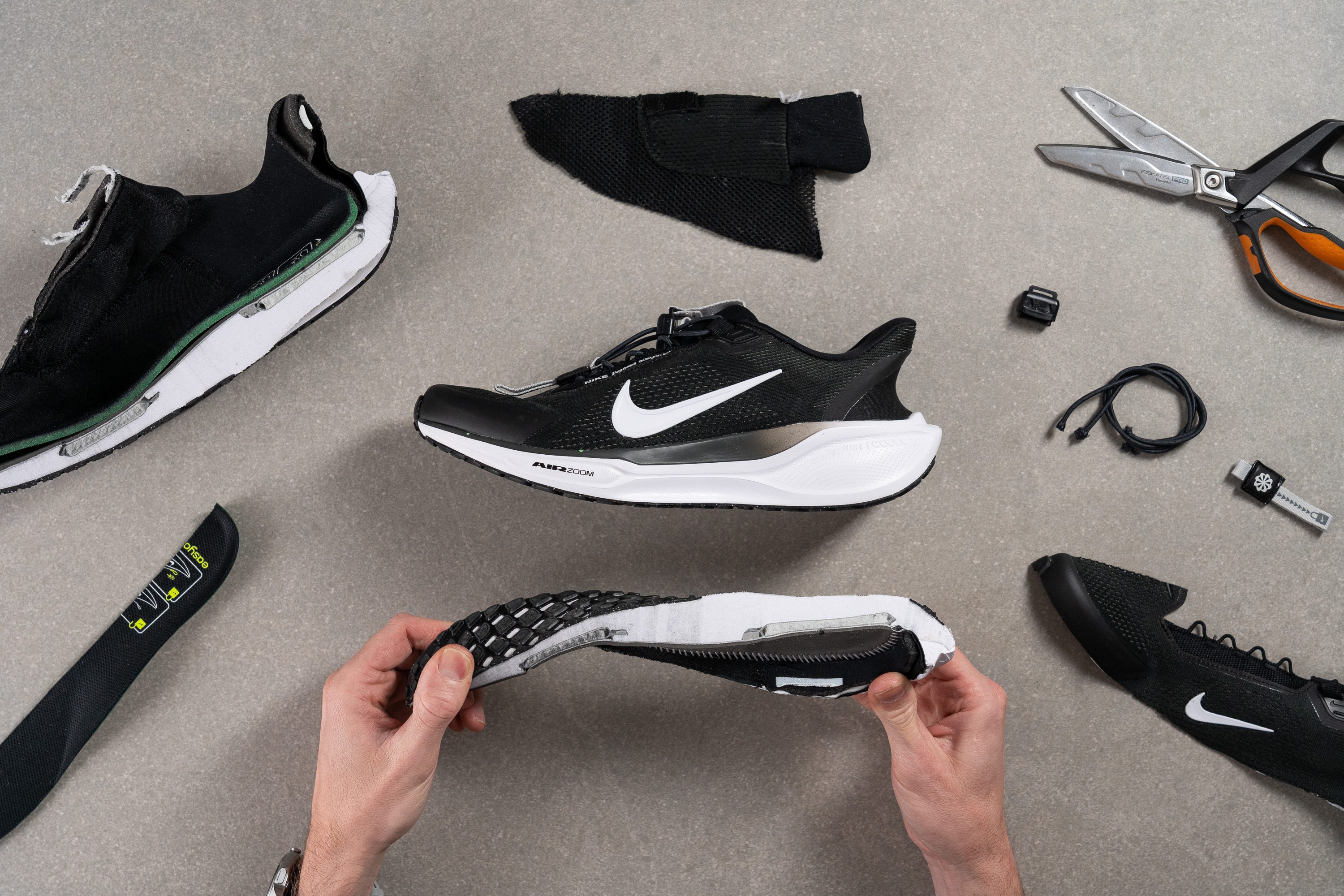
Cushioning
Heel stack
The Pegasus EasyOn shares the exact same midsole as the Pegasus 41. Through our evaluation, we found an identical stack height in the heel—33.6 mm.
This height is more than any previous Pegasus model and, in our opinion, an improvement. Thanks to the lighter ReactX midsole, the weight remains unchanged and feels comfortably light. The Pegasus has consistently been crafted as an average daily trainer, and this stack height aligns perfectly with that versatile design.
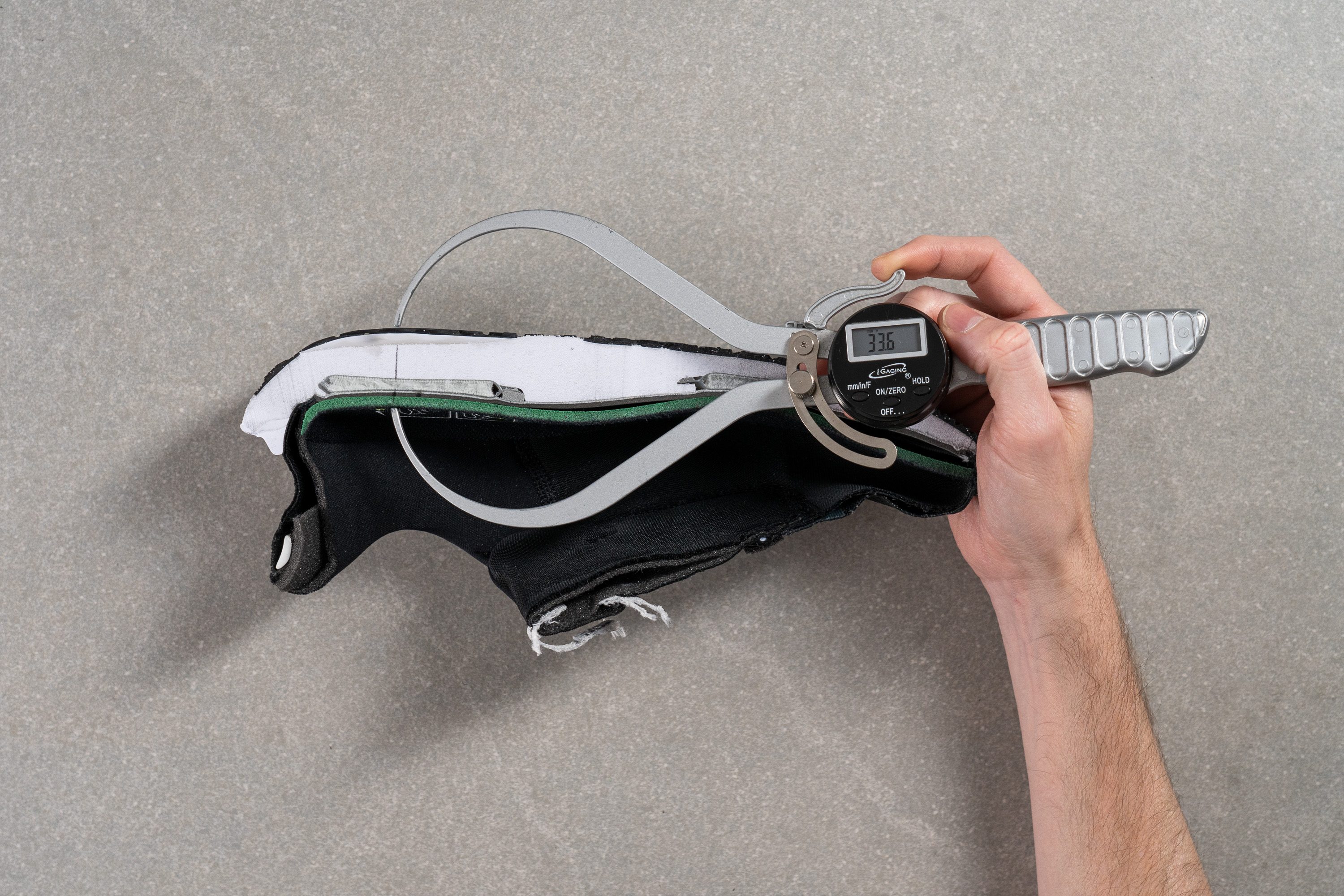
| Pegasus EasyOn | 33.6 mm |
| Average | 34.8 mm |
Forefoot stack
The forefoot feels slightly thinner compared to other competitors, but that’s classic Peg due to its high heel-to-toe drop. Therefore, finding 22.0 mm here was expected—it’s nearly identical to the non-EasyOn version!
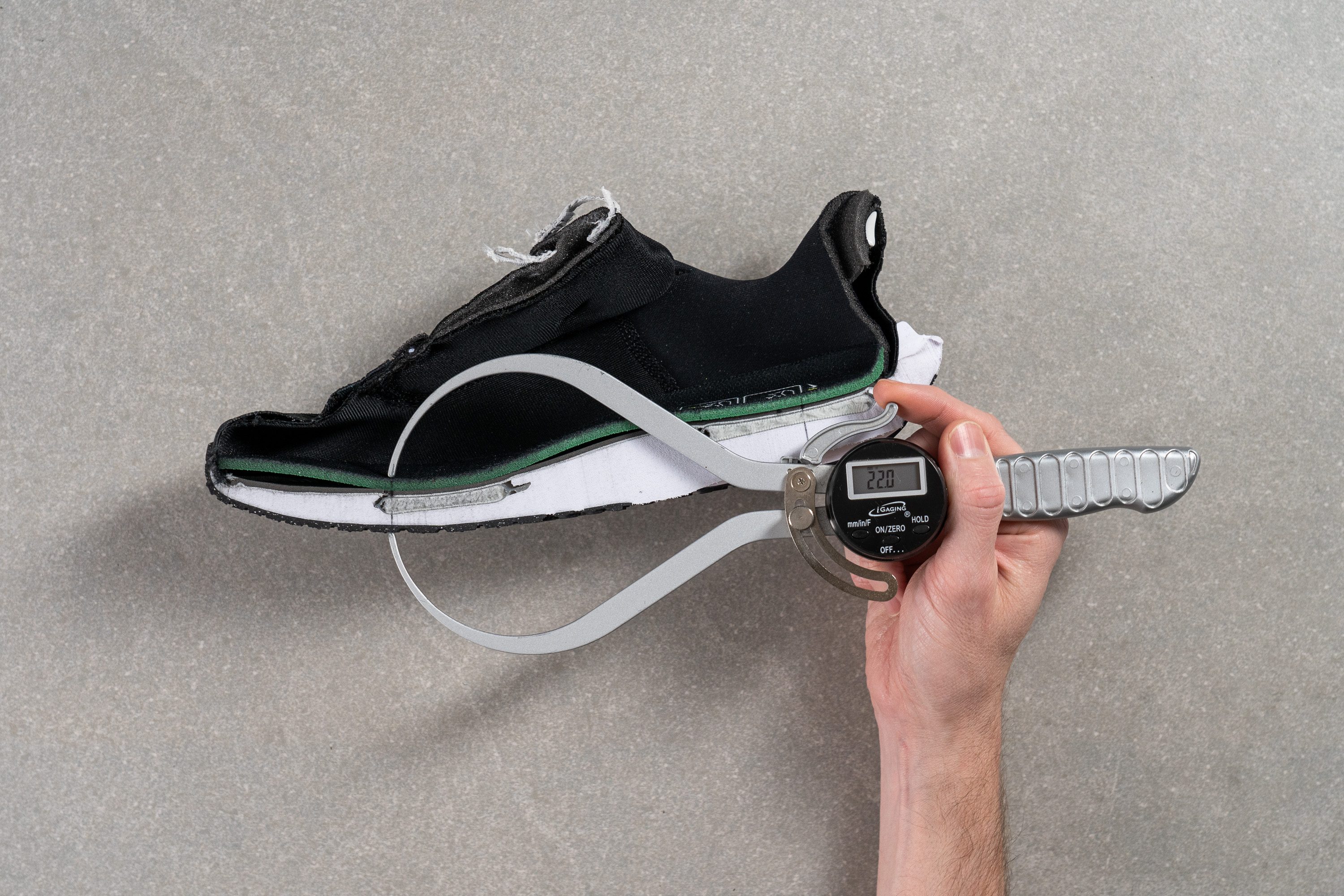
| Pegasus EasyOn | 22.0 mm |
| Average | 26.2 mm |
Drop
The Pegasus series has consistently featured a 10 mm heel-to-toe drop, which was theoretically expected. However, we measured 11.6 mm—a slight deviation that still keeps this model in the high-drop category, right where it’s always been.
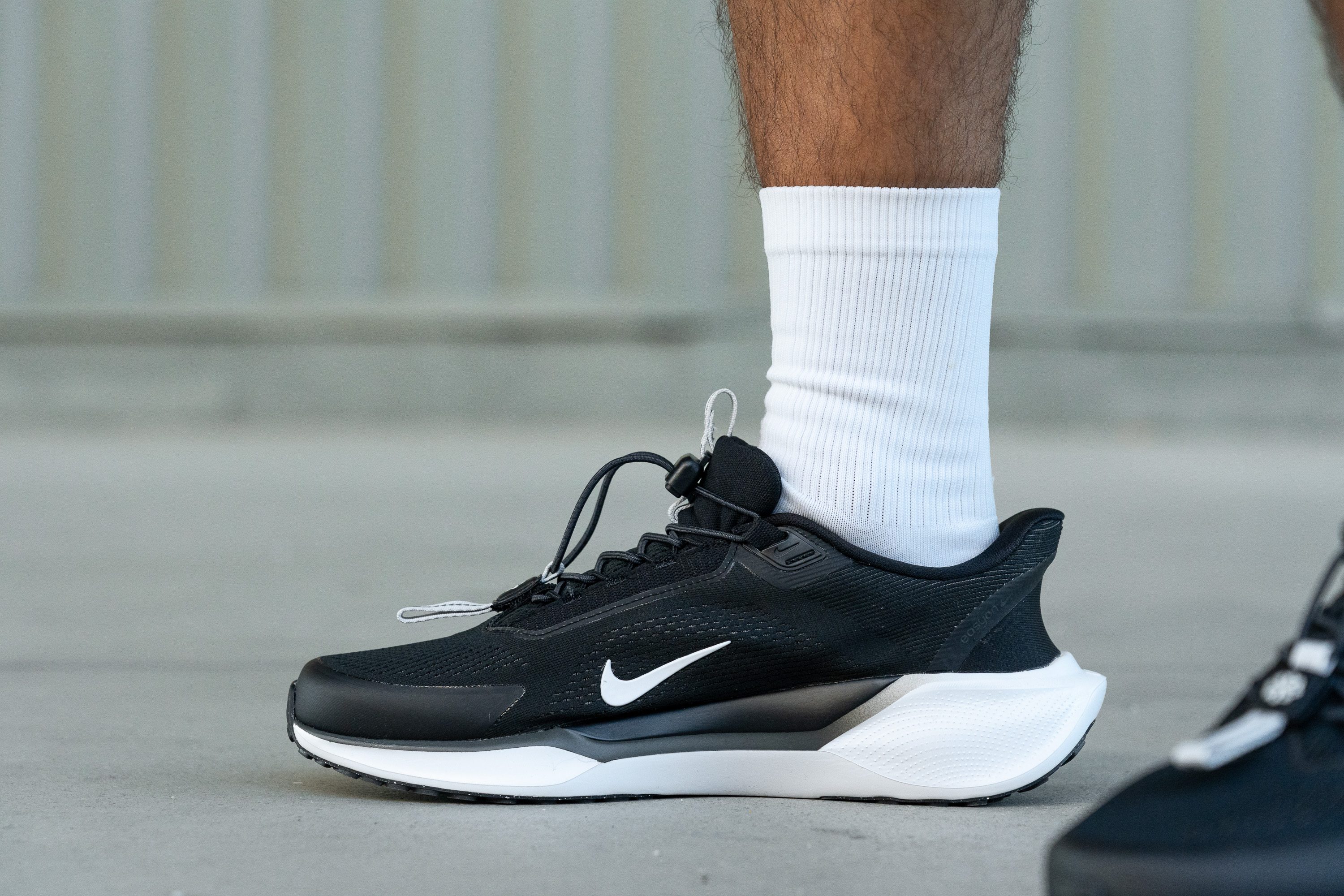
| Pegasus EasyOn | 11.6 mm |
| Average | 8.6 mm |
Midsole softness
The Peg 41 debuted Nike’s ReactX—a refined version of React that, according to Nike, promises greater energy return and a 43% lower carbon footprint. We’ll take their word for it, as we’re always pleased to see eco-conscious improvements.
What we did find is that ReactX feels noticeably better than React, with a springy-responsive quality that definitely enhances running efficiency.
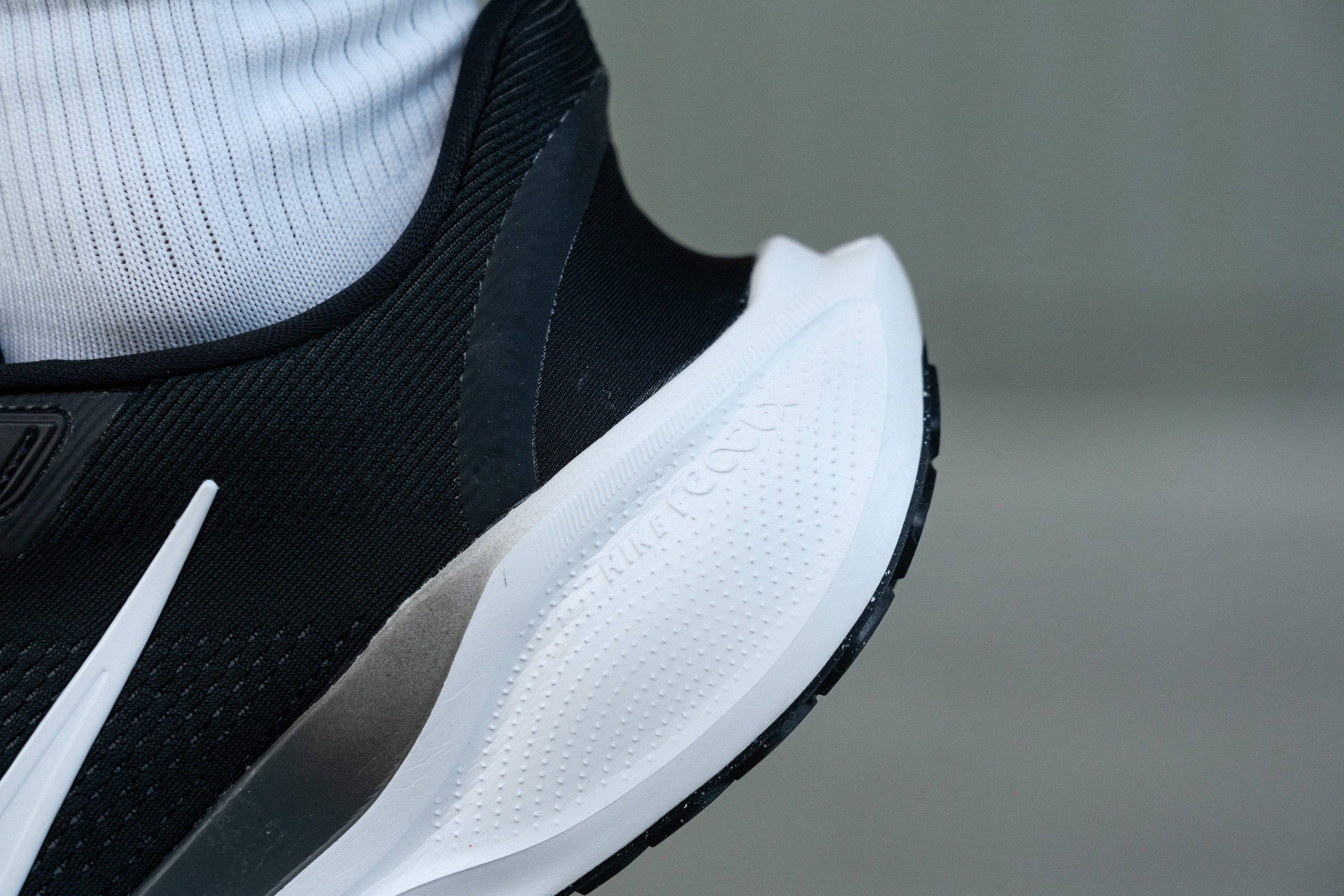
It’s a more enjoyable foam, scoring 18.9 HA on the durometer, giving it a slightly plush yet stability-focused feel. Indeed, this softness isn’t excessive—a vital quality in a shoe with elastic laces.
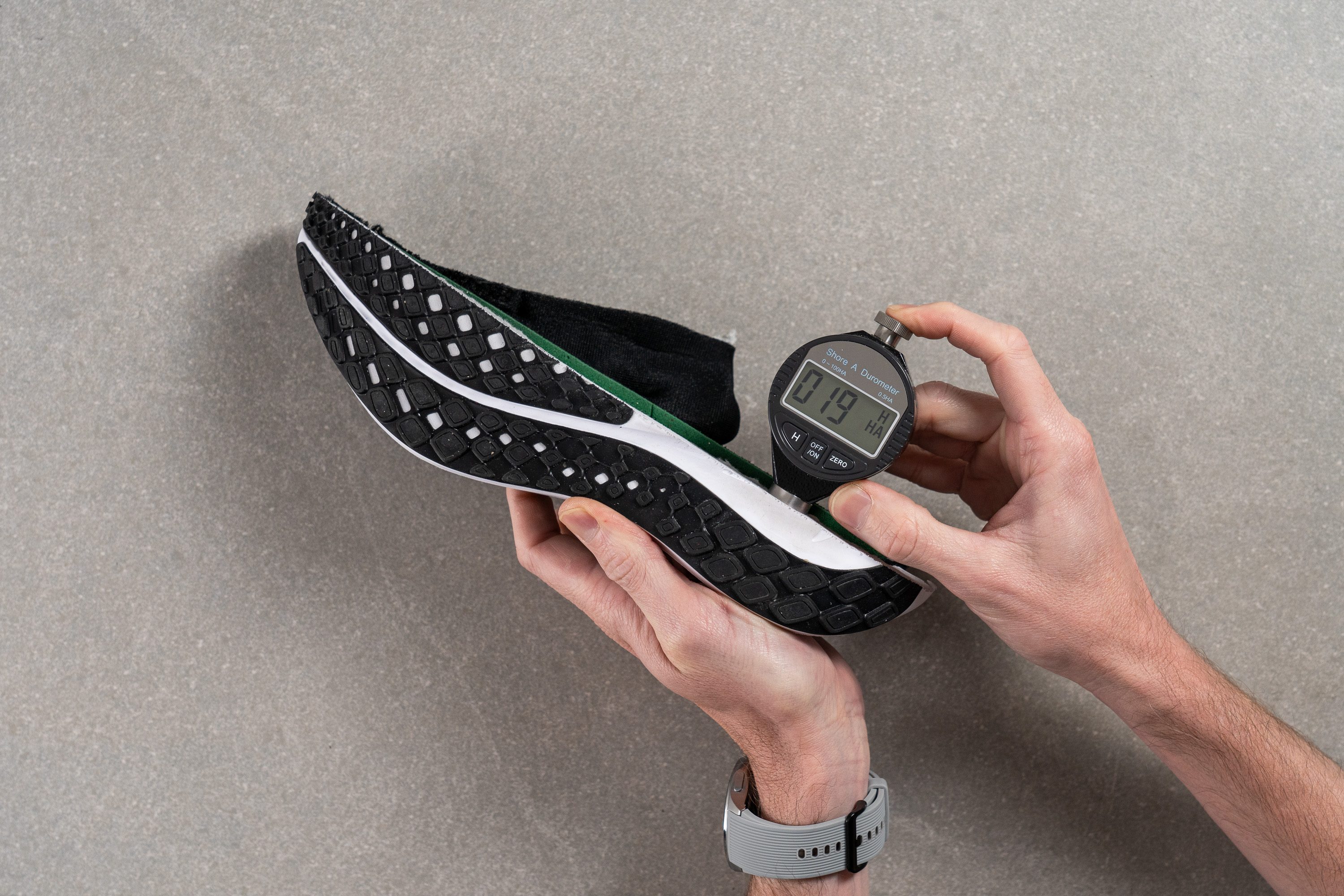
| Pegasus EasyOn | 18.9 HA |
| Average | 20.4 HA |
Rocker
Those seeking a more rockered feel in the Pegasus will find that the EasyOn provides the same experience as the Peg 41, which is notably more curved than earlier models—especially in the heel area.
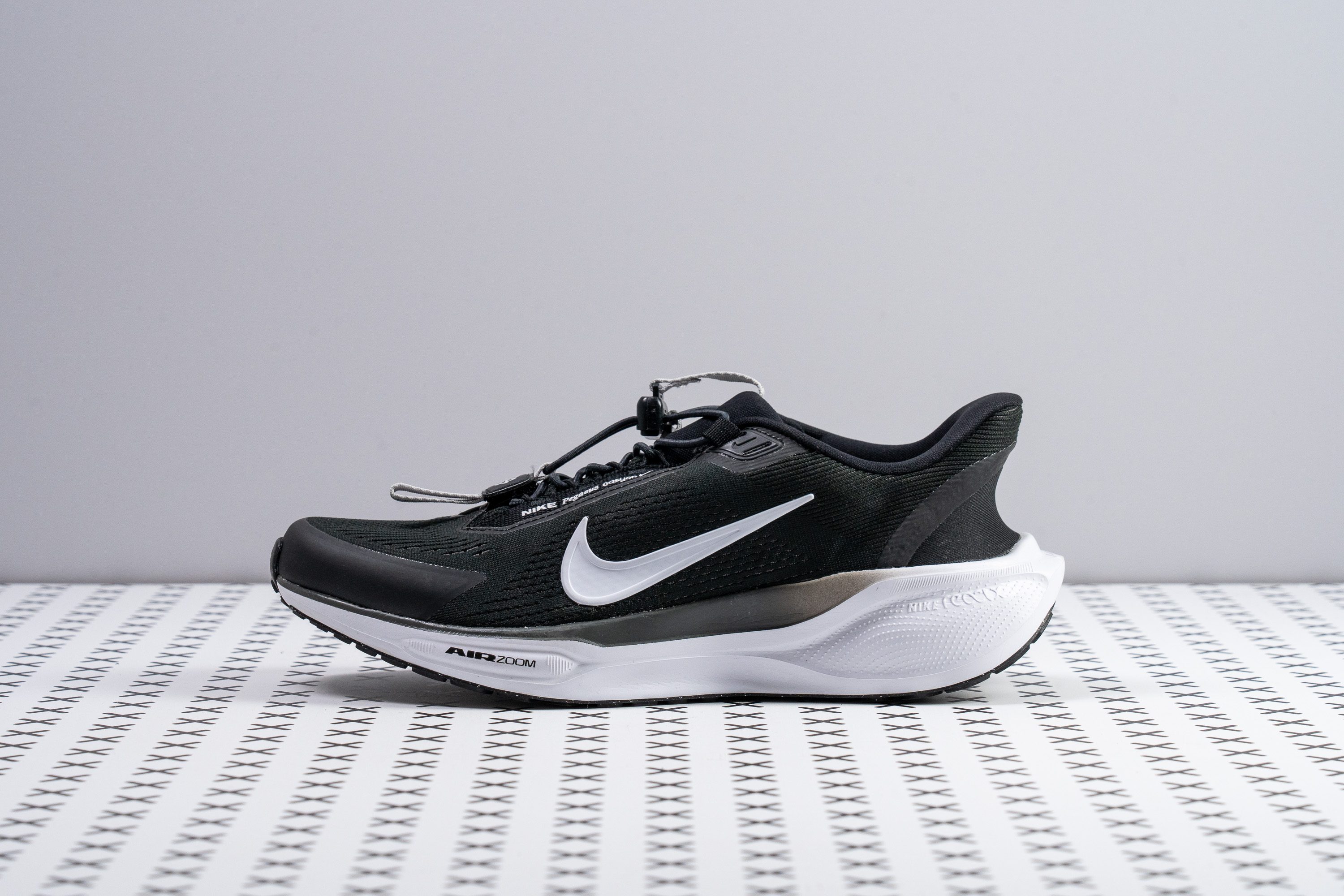
Air Zoom
The same midsole means the two Air Zoom units remain in the forefoot and heel, giving a springy bounce to the ReactX foam. This is a signature feature of the Pegasus series, and we’re glad it’s included in this version.
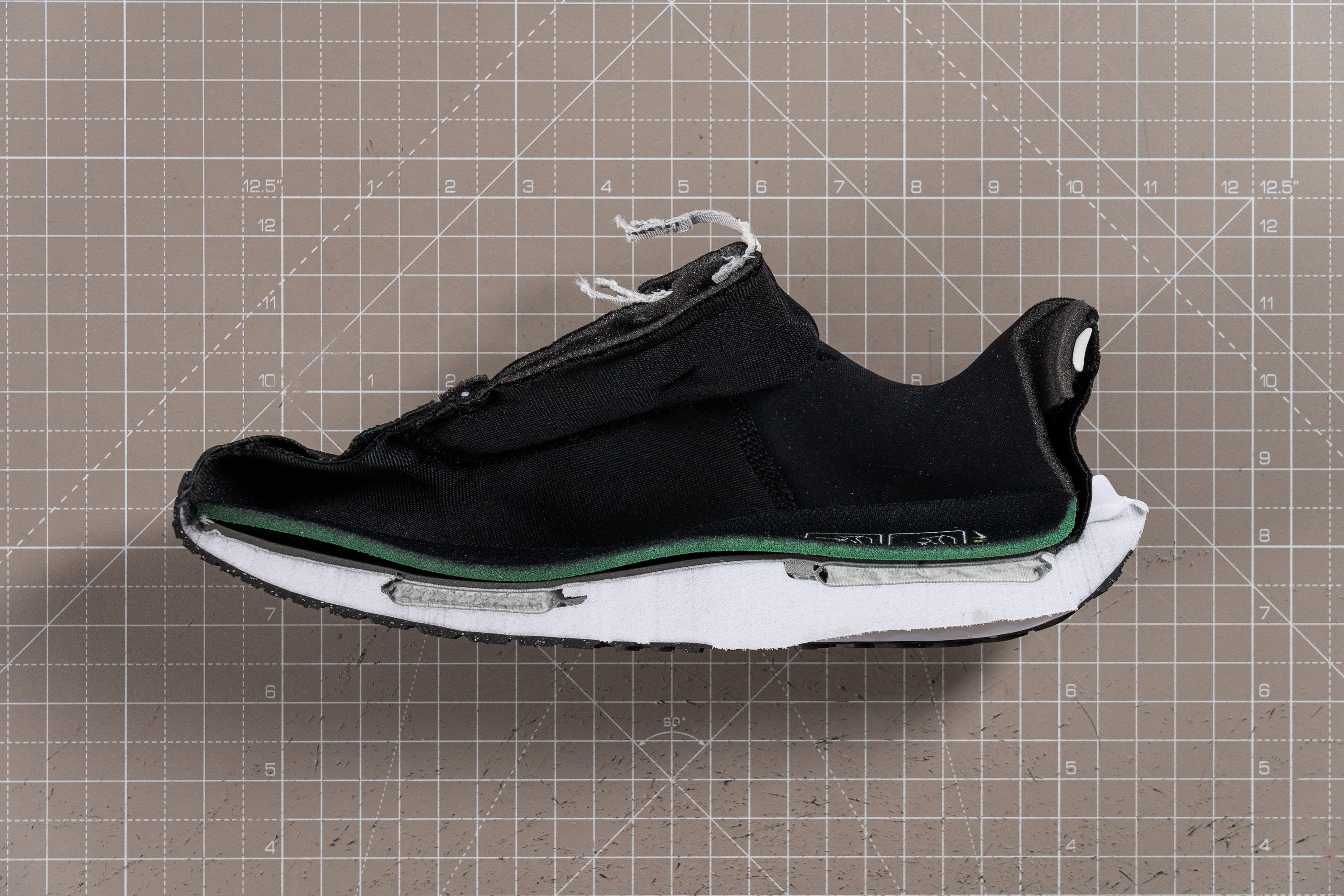
Size and fit
Size
Nike Pegasus EasyOn fits true to size (36 votes).
Width / Fit
We found that the overall fit of the Pegasus EasyOn doesn't deviate much from the original Pegasus 41. And we made the gel moulds of both shoes' interiors to prove it.
Applying our calliper to the widest part of EasyOn's gel mould, we got a slightly below-average reading of 93.6 mm, which is only a millimetre away from the Pegasus 41 (94.6 mm).
Folks with medium-width feet are sure to feel comfortable in this Nike shoe but those with wider feet may want to opt for the 41 instead. At least the latter is available in wide and extra wide options.
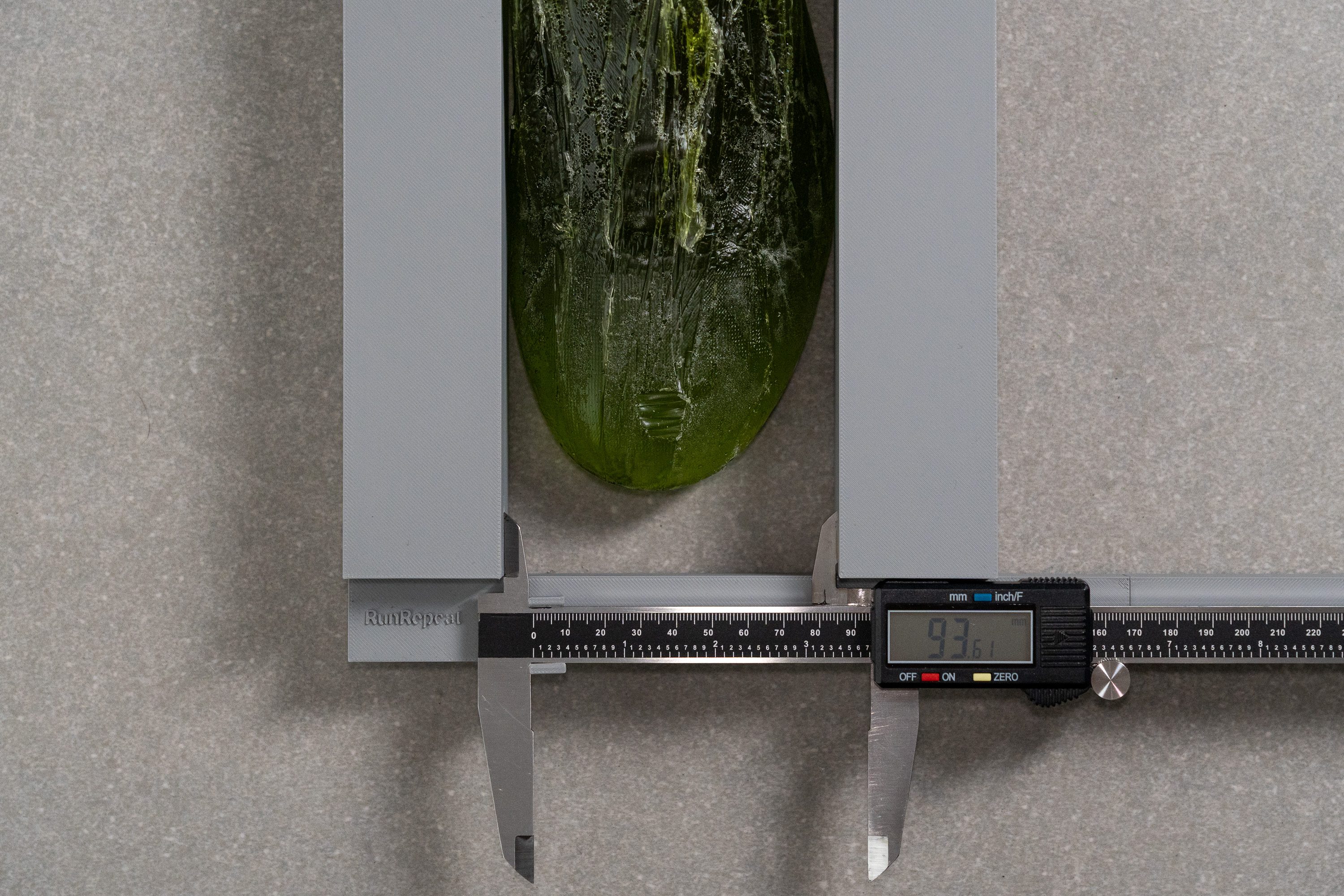
| Pegasus EasyOn | 93.6 mm |
| Average | 95.1 mm |
Toebox width
Even though it's not the roomiest, the shoe's toebox also falls into the medium-width range. Our calliper shows that it is 72.0 mm wide in the big toe area.
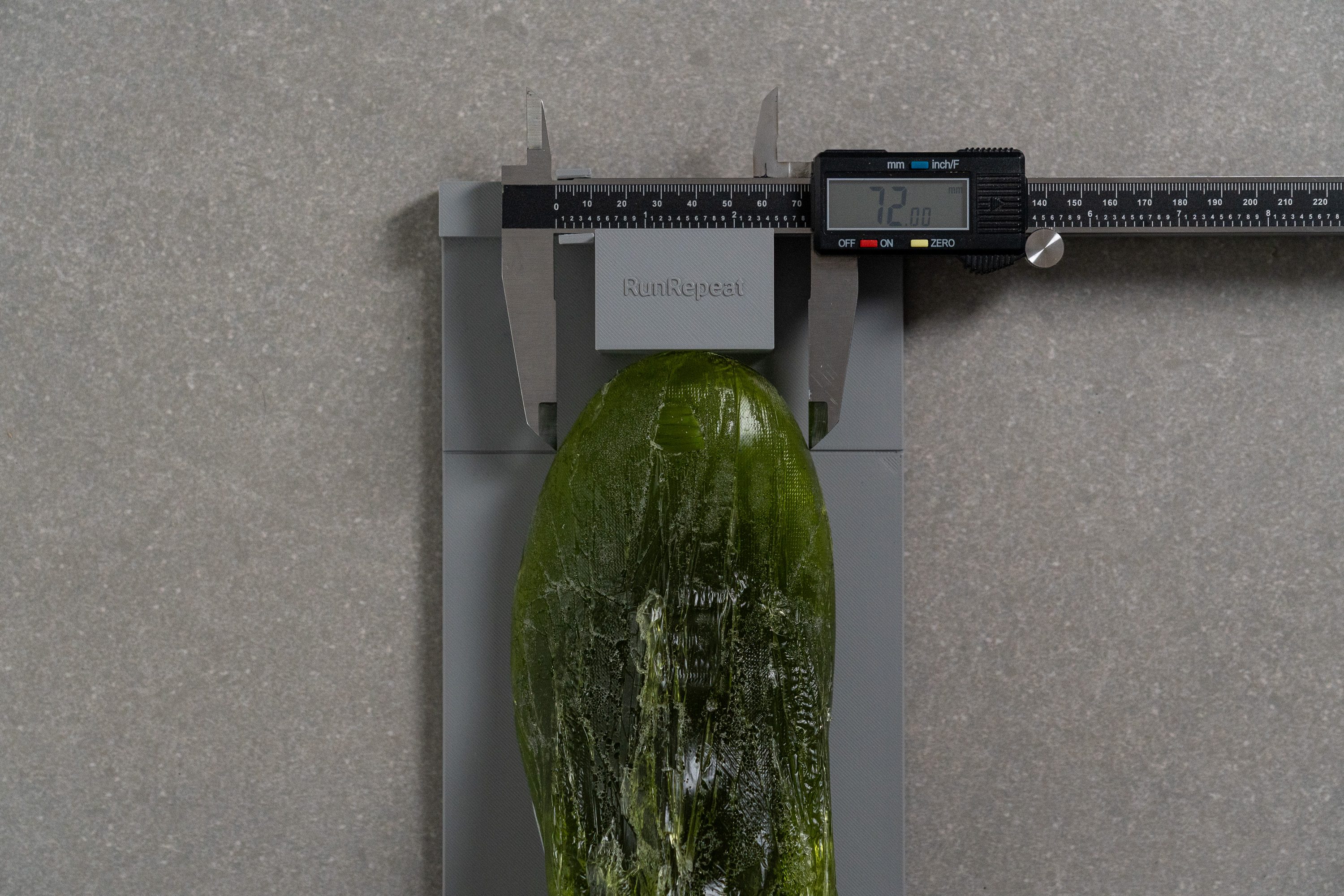
| Pegasus EasyOn | 72.0 mm |
| Average | 73.3 mm |
Toebox height
As for the shoe's vertical space, you can expect a standard amount of room above the toes with its toebox height of 26.6 mm.
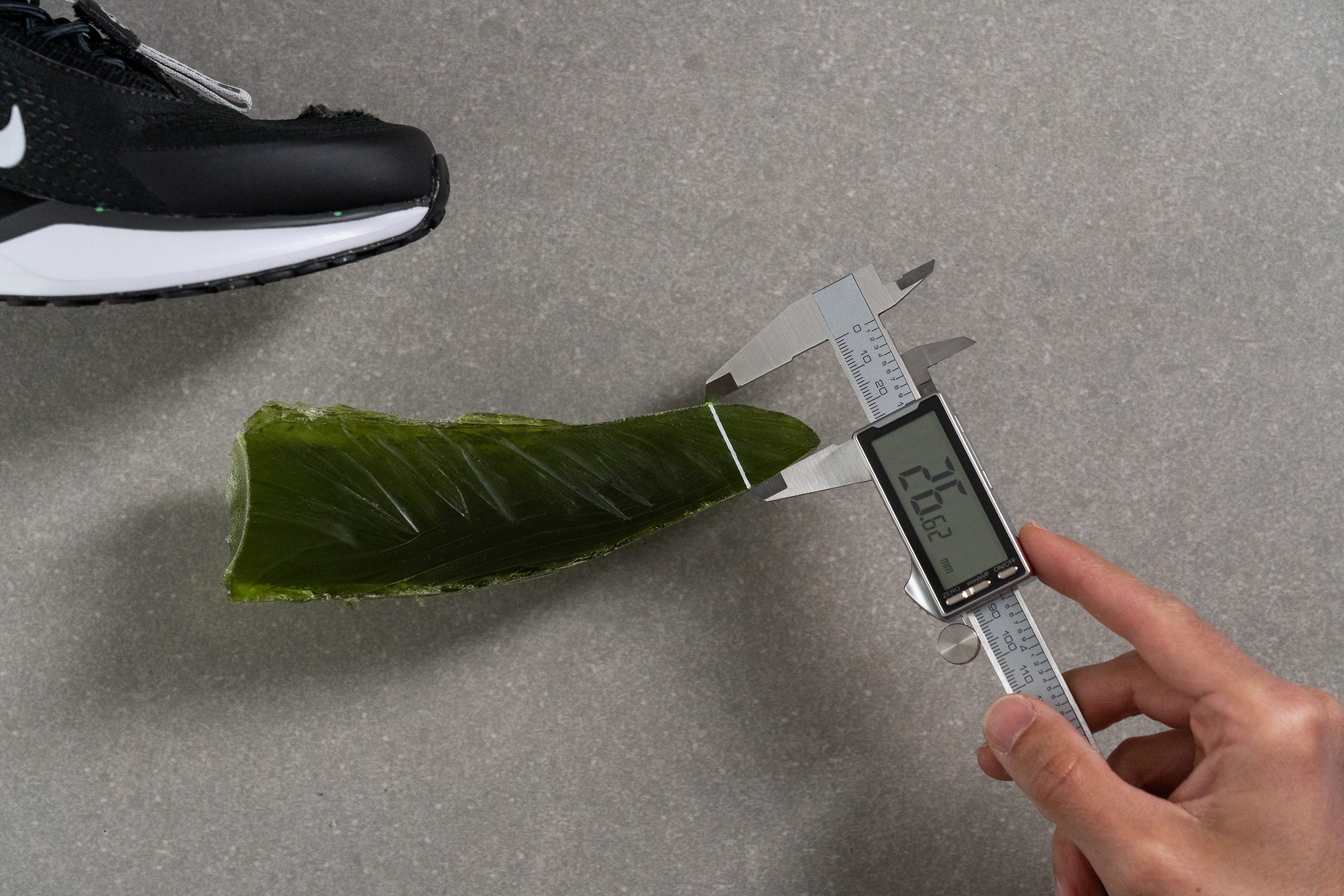
| Pegasus EasyOn | 26.6 mm |
| Average | 27.0 mm |
EasyOn
EasyOn is a technology developed by Nike to make slipping into the shoe faster and easier, ideal for anyone who needs a quicker way to get ready to walk or run. For individuals with disabilities, it’s a game-changing feature, offering the independence to put on their shoes without needing help.
And here’s how it works: the heel has a collapsible design that springs back into place, enabling hands-free entry. Once your foot is inside, the heel snaps back, securing the fit. The next step is to pull the tab and attach it with the Velcro to lock everything in place. Simple as that.
You might be wondering—this design makes it easy to put on, but what about taking the Pegasus EasyOn off? It’s just as simple!
Flexibility / Stiffness
We know that most users will likely wear the Pegasus EasyOn more for walking than running. That’s why, in our view, a low longitudinal stiffness is essential for all-day comfort.
Here in the lab, we tested it with our force gauge and found a nice 18.8N result. That's a level that perfectly meets our expectations for a comfortable walking experience.
This test follows an older methodology, which is why you don't see recently tested shoes in the chart. Results from different methodologies can not be compared.
| Pegasus EasyOn | 18.8N |
| Average | 28.1N |
Weight
When we first unboxed the shoe, we wondered if the EasyOn system might make it heavier than the regular Pegasus. But our assessment suggests that Nike deserves credit here—after testing, we discovered only a minor increase of 0.2 oz or 5g, bringing it to 10.1 oz or 286g.
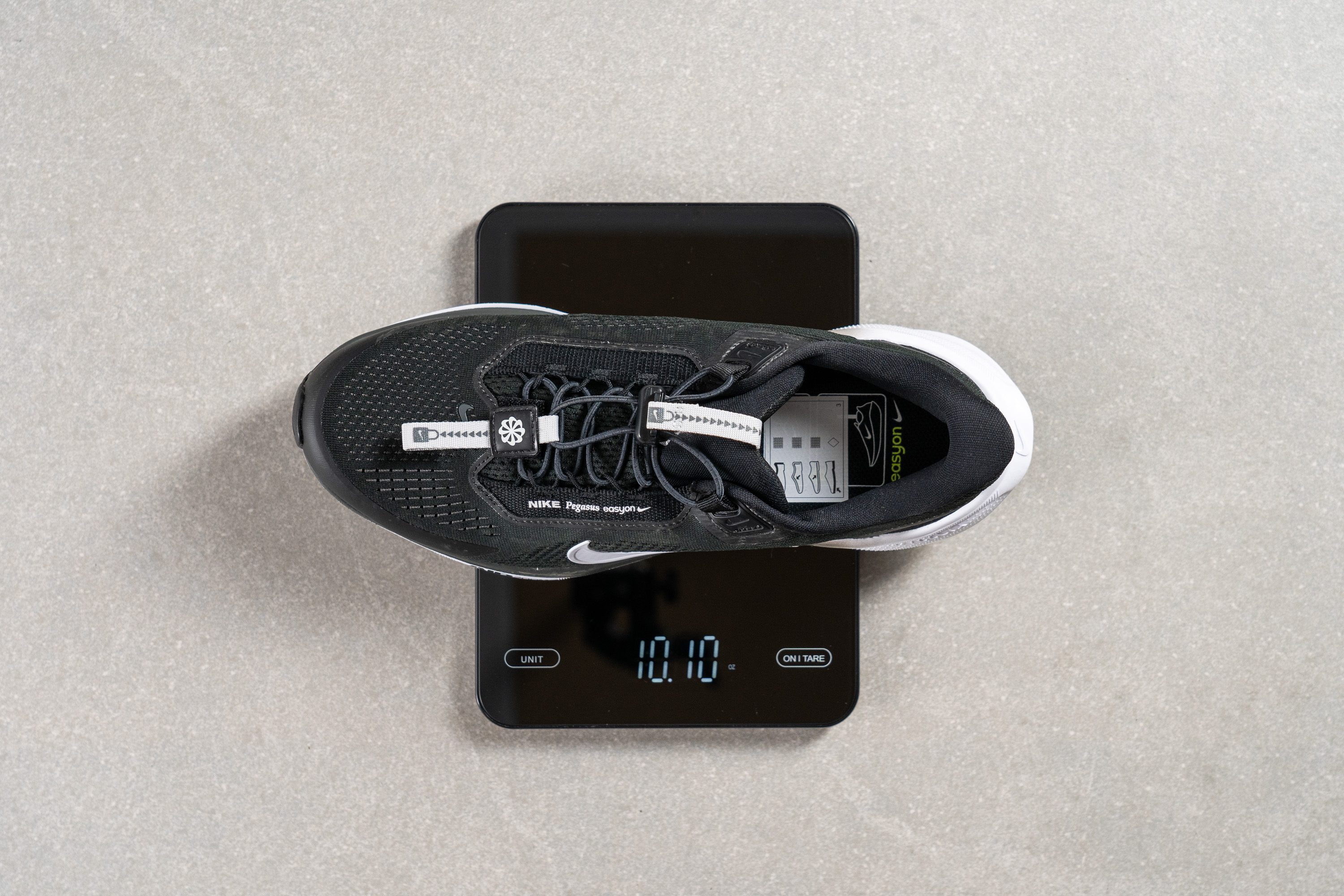
| Pegasus EasyOn | 10.1 oz (286g) |
| Average | 9.3 oz (264g) |
Breathability
As we mentioned, the EasyOn model only changes the upper compared to the Pegasus 41, keeping everything else exactly the same. So, we were eager to see if the new upper maintained the excellent ventilation of its sibling.
It actually exceeded our expectations! Jumping from a 4/5 to an impressive 5/5. In our smoke test, it aced ventilation, and as a bonus, the visual of smoke streaming out of the nearly invisible ventilation holes was captivating.
Perhaps due to this black colorway, the ventilation holes are hard to spot at first glance and that's why we feared a worse outcome, but under an LED light, they’re easy to find. This makes it much clearer to see exactly where the ventilation is working.
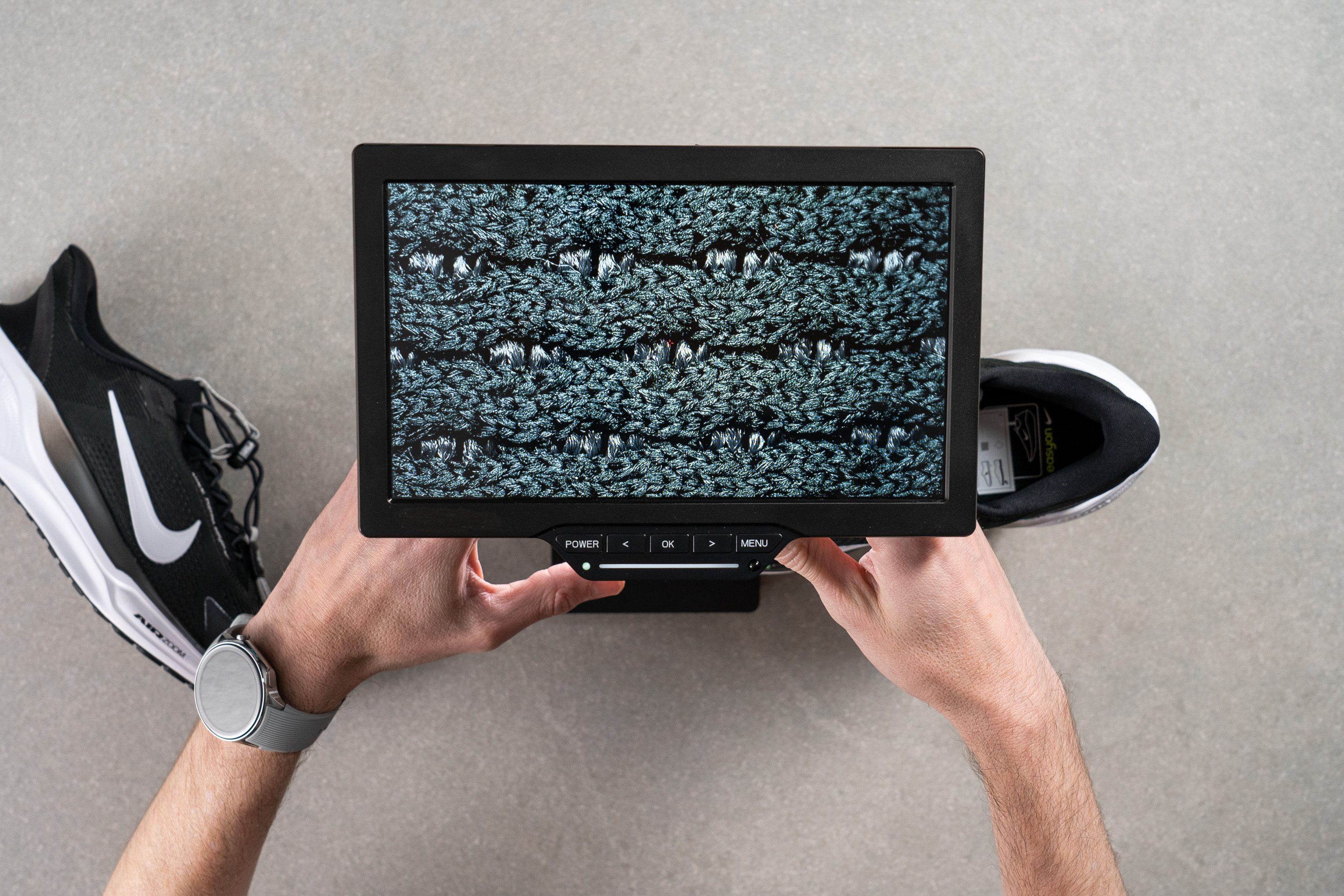
The engineered mesh has a completely new feel—maybe slightly less premium to the touch, but highly effective. Under our microscope, we saw these ventilation holes spaced every few millimetres, showing thoughtful design.
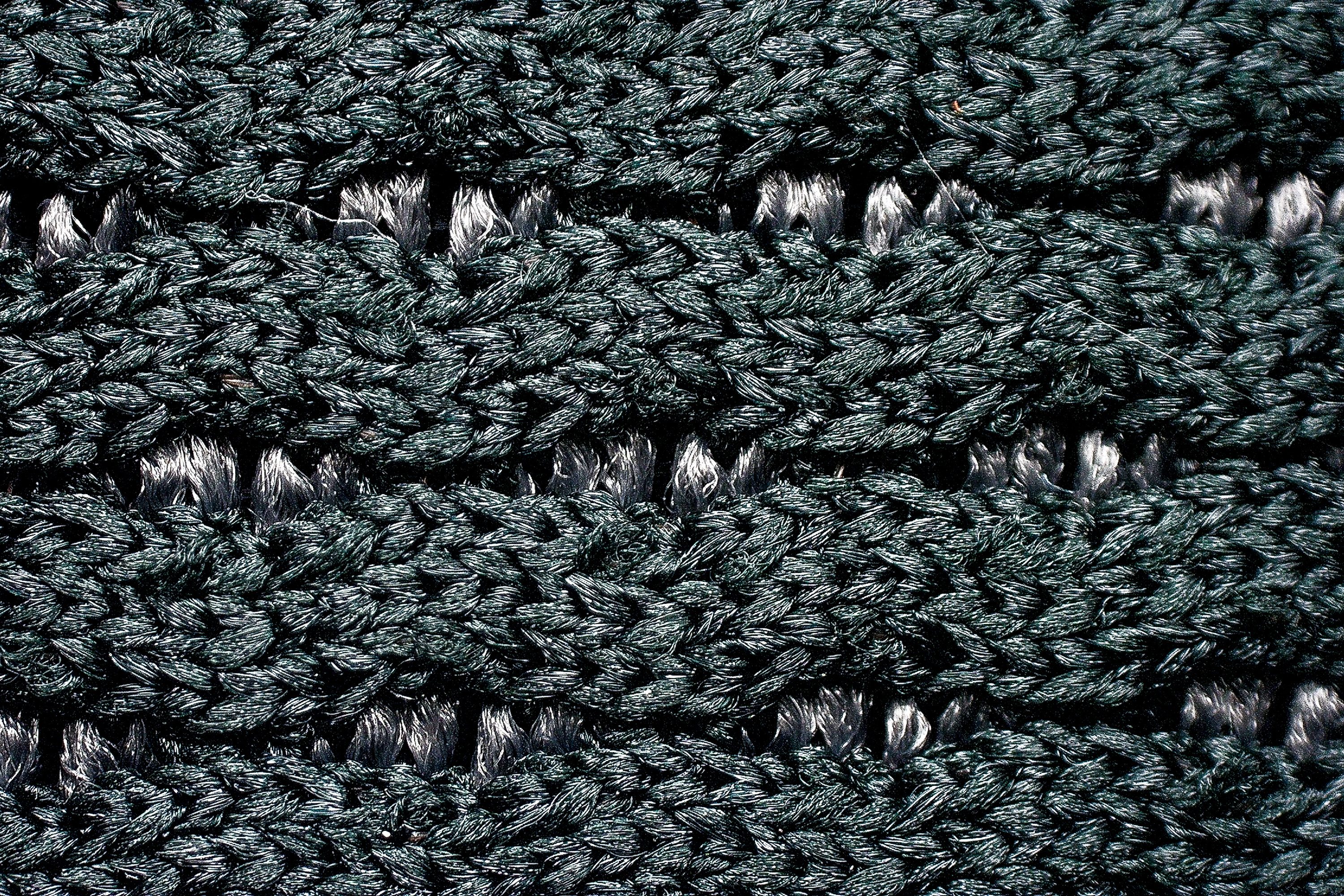
We enjoyed cutting the upper to analyse its construction.
It’s similar yet distinct from a standard Pegasus. The heel area feels slightly less padded to accommodate the EasyOn system, but overall, we’re very satisfied with these findings.
| Pegasus EasyOn | 5 |
| Average | 3.7 |
Stability
Lateral stability test
While the midsole remains unchanged, it’s clear the upper does not. In fact, the entire upper has been redesigned, which significantly impacts stability. This is a 100% neutral running shoe.
The ride feels just a tiny bit less stable than the regular Pegasus due to obvious adjustments. Moving away from a traditional lacing system and standard heel counter—along with modifications required for the EasyOn feature—introduces a minor drop in stability, but it’s not a deal-breaker by any means.
Torsional rigidity
Despite sharing the same outsole and midsole with the Pegasus 41, we found that changes to the upper created a stiffer design that’s a touch harder to twist and bend. In our experience, that's a 3/5—aligning well with an average daily running shoe anyway.
| Pegasus EasyOn | 3 |
| Average | 3.5 |
Heel counter stiffness
As expected, the heel counter is entirely different—but maybe not in the way you'd imagine. Designed to be ultra-collapsible for the EasyOn function, it might seem like it would score a 1/5 in rigidity.
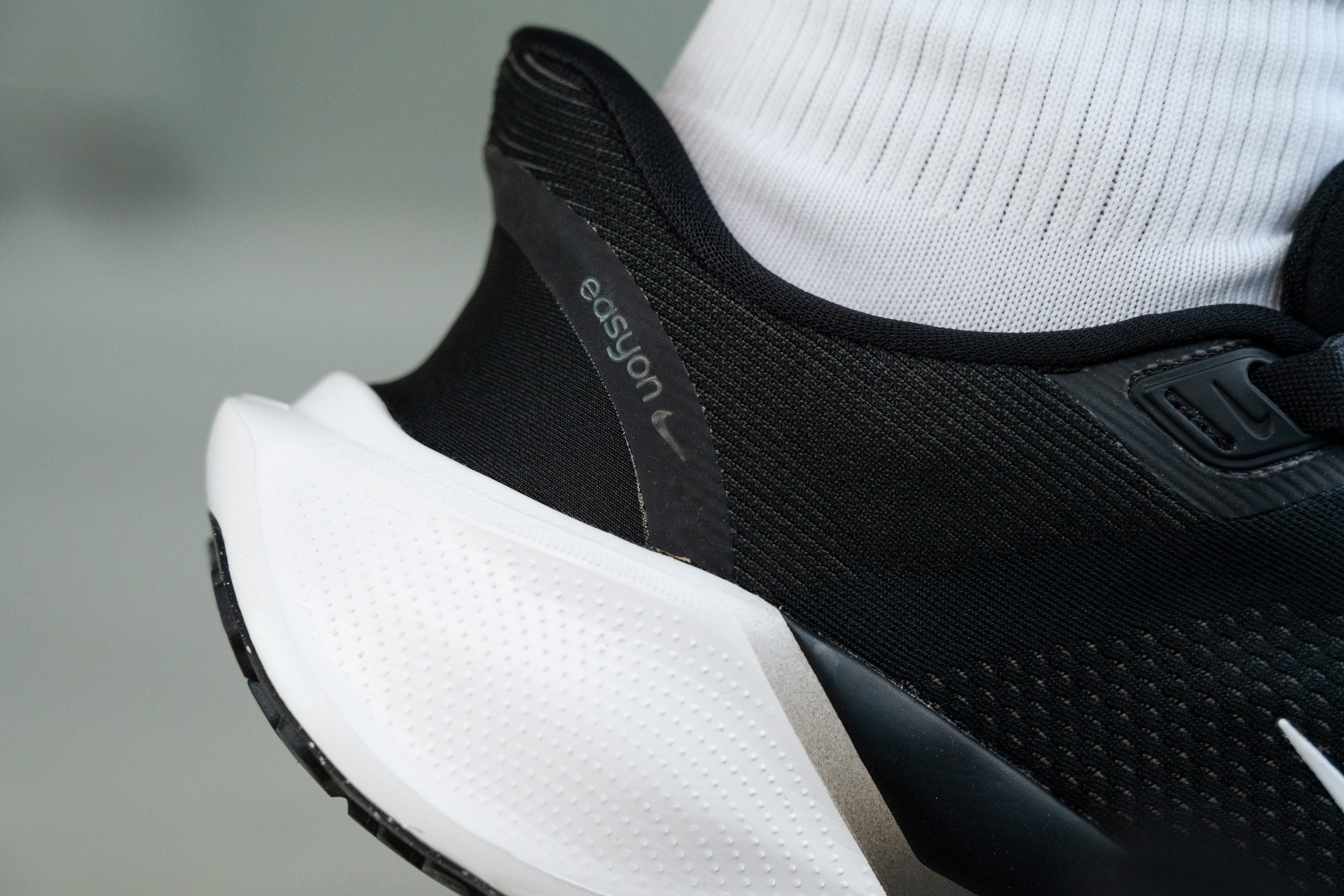
However, after testing, we discovered that it’s surprisingly rigid—crafted with a uniquely firm-flex design that folds precisely at a set point and direction, aiming to keep the heel secure while accommodating easy entry. And of course, such rigidity means a 5/5 in our scale!
| Pegasus EasyOn | 5 |
| Average | 2.9 |
Midsole width - forefoot
Moving to the midsole dimensions, there’s little of note here out of the ordinary. At 112.6 mm in the forefoot, it’s about what you’d expect for a daily trainer—perhaps slightly on the narrow side, but the Pegasus has never featured an expansive landing base.
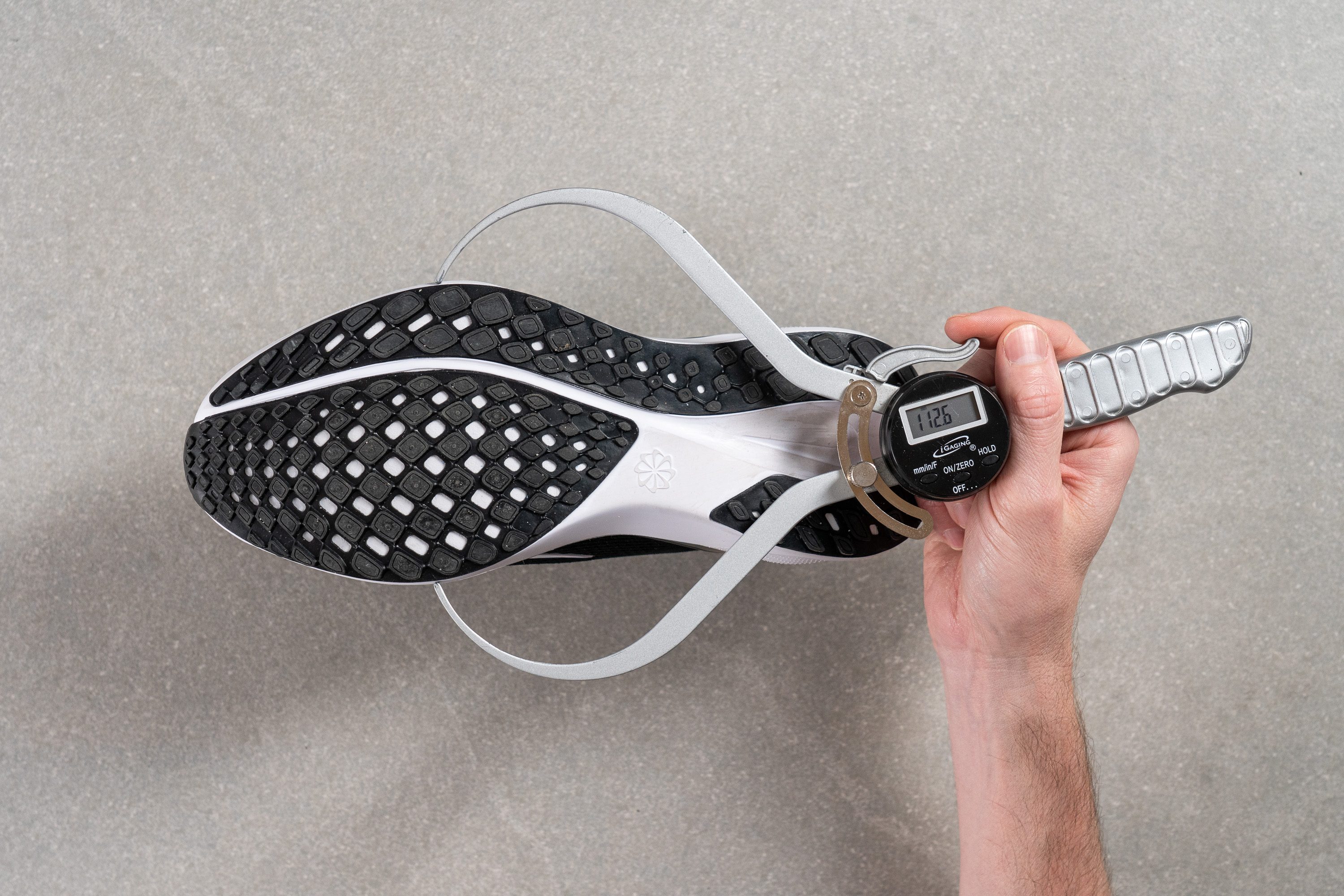
| Pegasus EasyOn | 112.6 mm |
| Average | 114.3 mm |
Midsole width - heel
The heel retains the same design as a standard Pegasus, with a width of 88.9 mm—suitable for most heel strikers and providing a balance that keeps the shoe moderately stable yet agile.
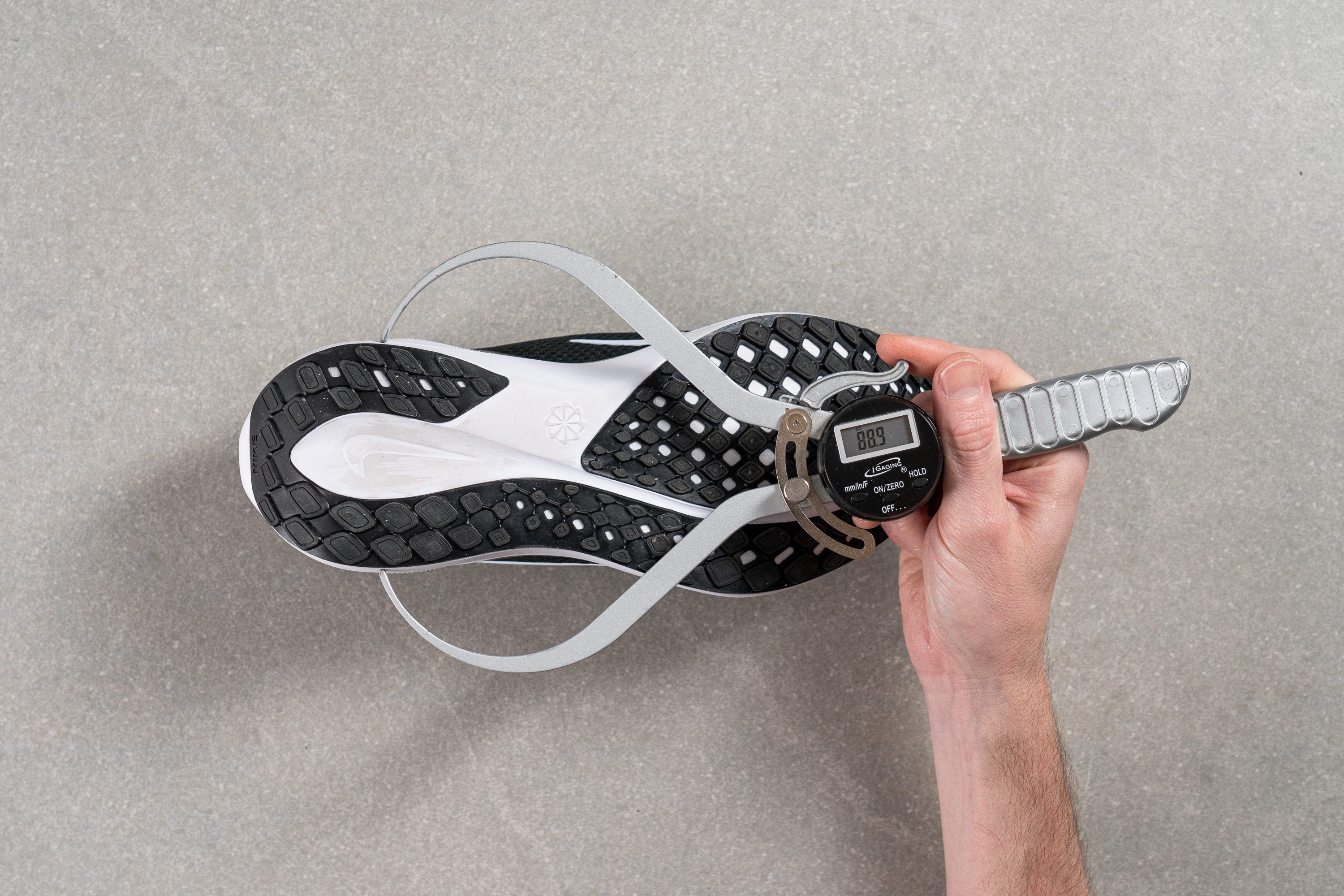
| Pegasus EasyOn | 88.9 mm |
| Average | 90.7 mm |
Durability
Toebox durability
Unfortunately, the increased breathability came with the usual drawback in the upper—reduced durability.
In our experience, we found this the biggest downside of the EasyOn version, scoring a disappointing 1/5.
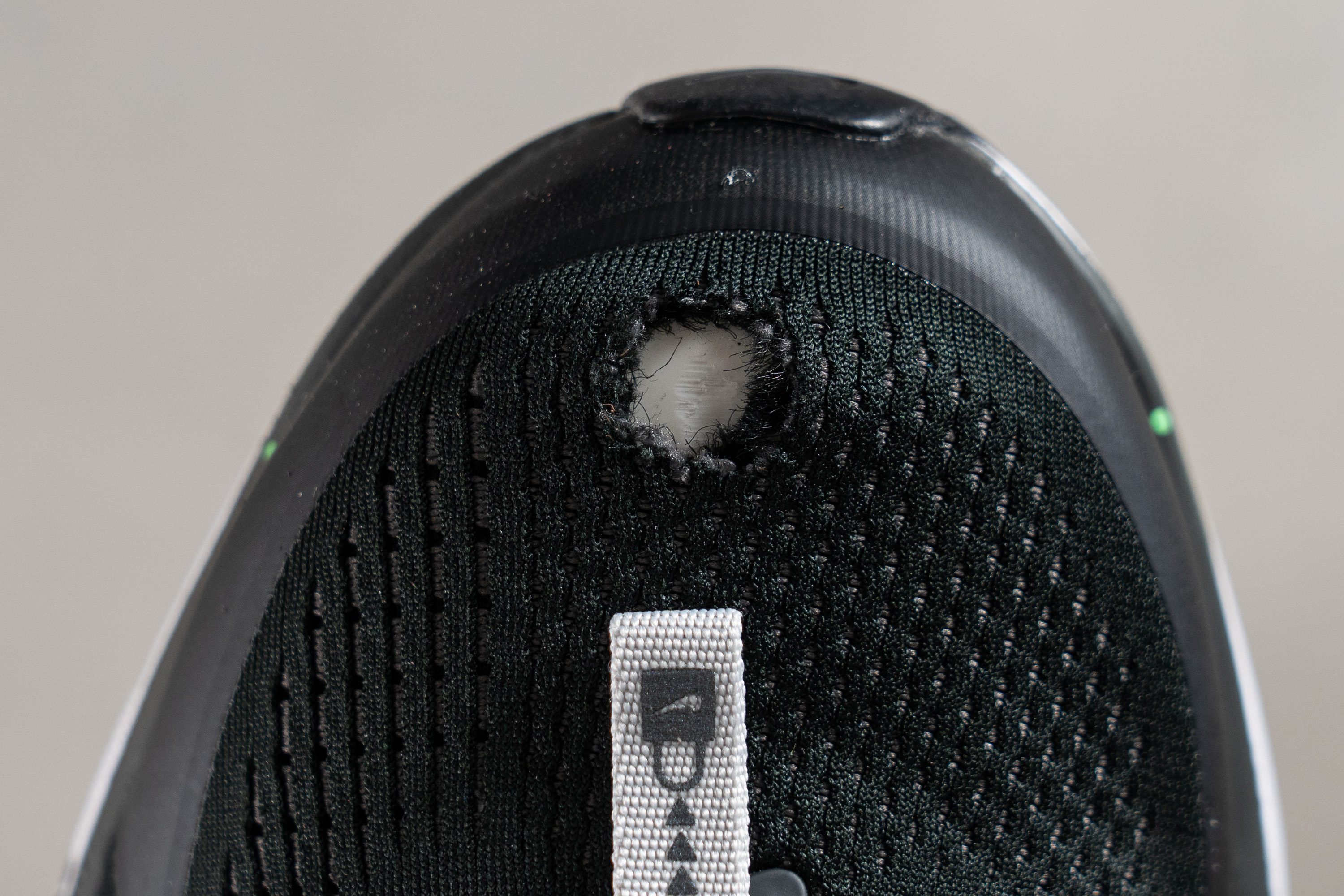
| Pegasus EasyOn | 1 |
| Average | 2.6 |
Heel padding durability
The heel padding impressed us with its essential durability—a crucial factor for the EasyOn feature, as constant friction from socks occurs each time you slip the shoe on.
After evaluating the end result, we confidently settled on a solid 4/5 rating for durability—a reassuring outcome.
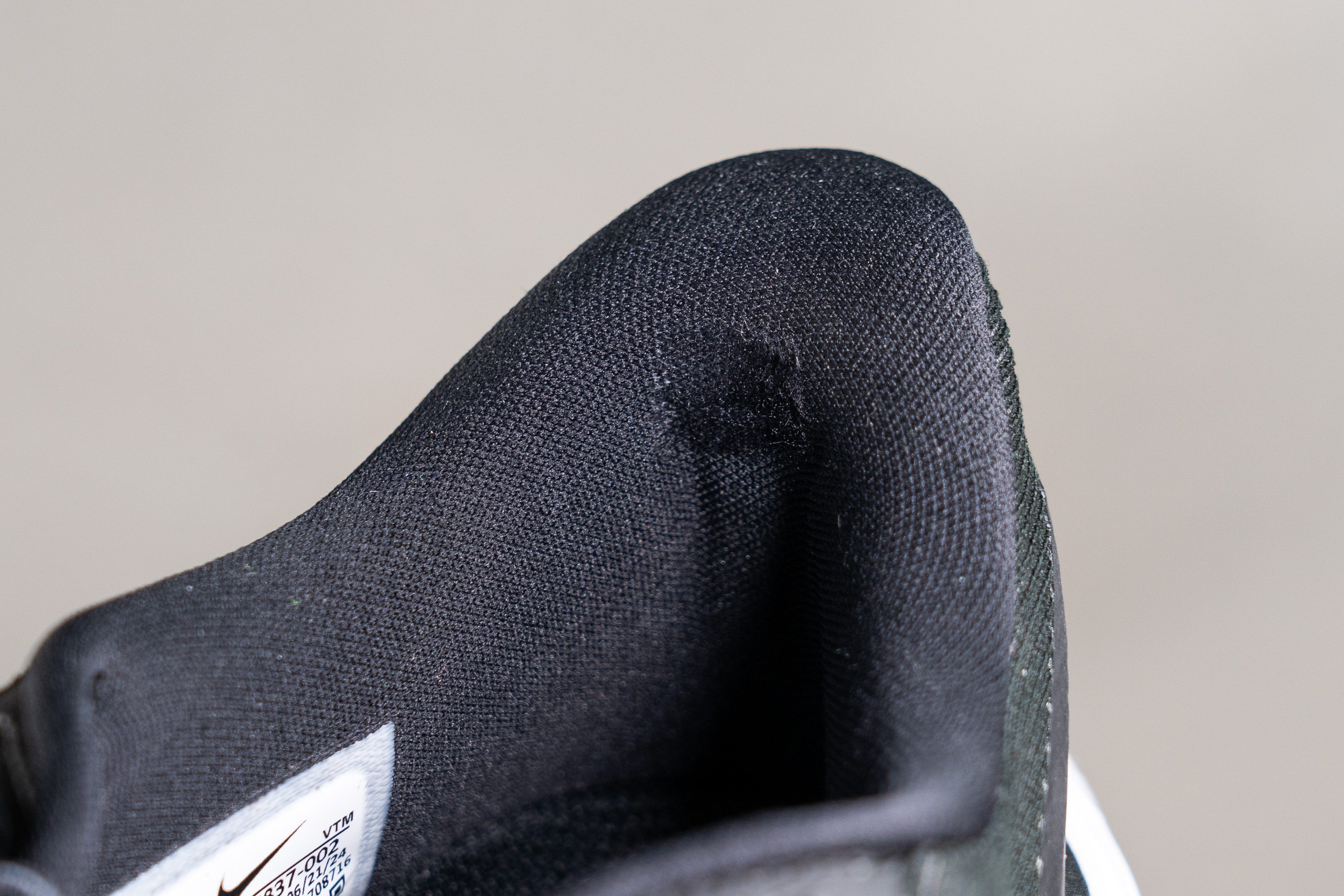
| Pegasus EasyOn | 4 |
| Average | 3.4 |
Outsole hardness
After mixed results with the upper, we moved to the iconic waffle-style outsole on the Pegasus EasyOn—identical to the regular Pegasus.
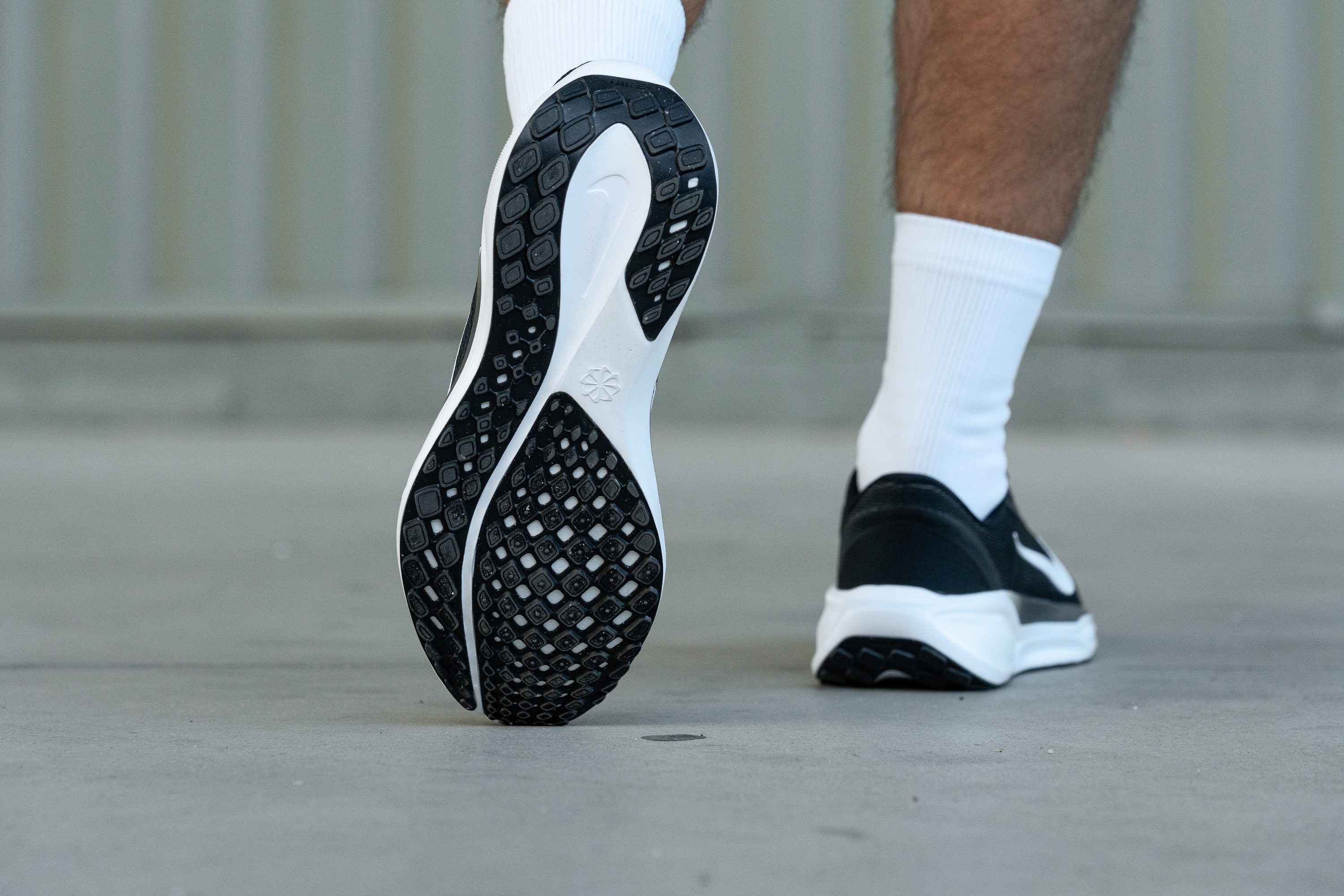
With a hardness of 86.3 HC, traction performs well across various surfaces, and the durable-rubber coverage is ample, especially compared to other daily trainers.
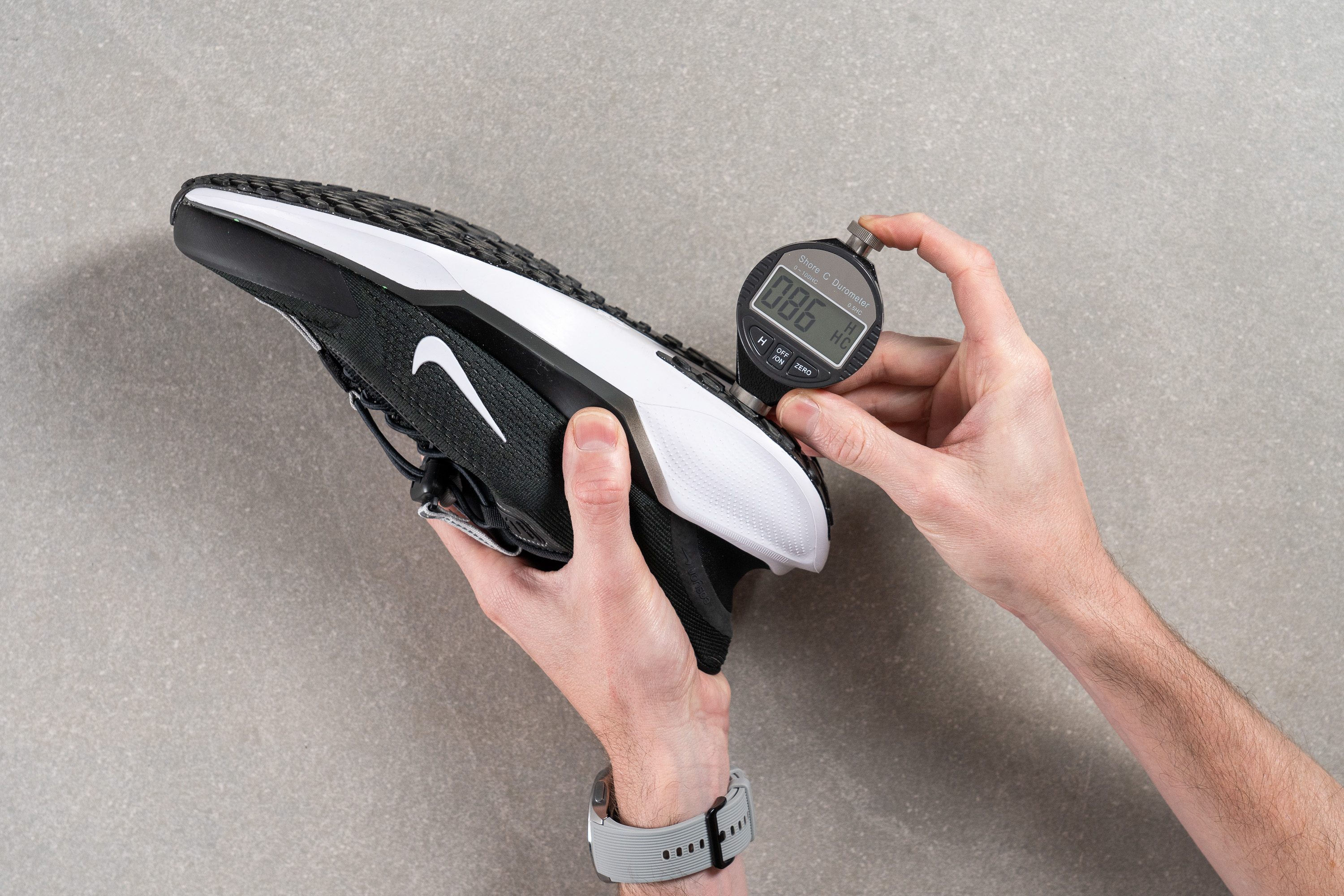
| Pegasus EasyOn | 86.3 HC |
| Average | 79.2 HC |
Outsole durability
To assess the durability of this rubber, we tested it against our Dremel for the third and final time here in the lab.
The result was a 1.2 mm dent, leaving us right where we started—not concerned, not overly impressed.
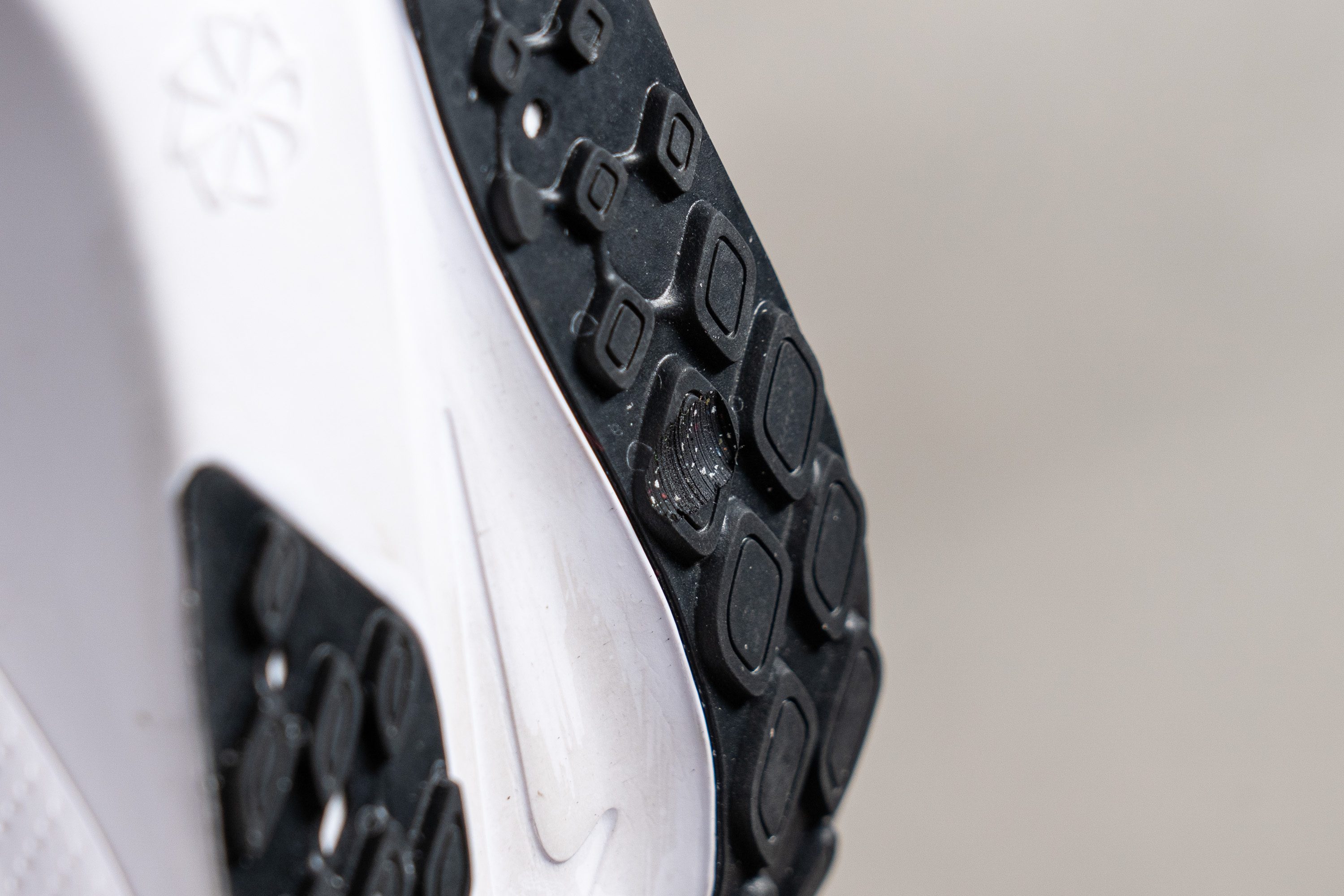
| Pegasus EasyOn | 1.2 mm |
| Average | 1.1 mm |
Outsole thickness
We measured the rubber thickness at 3.0 mm, which we believe is more than sufficient for everyday use and the expected wear in the Pegasus EasyOn.
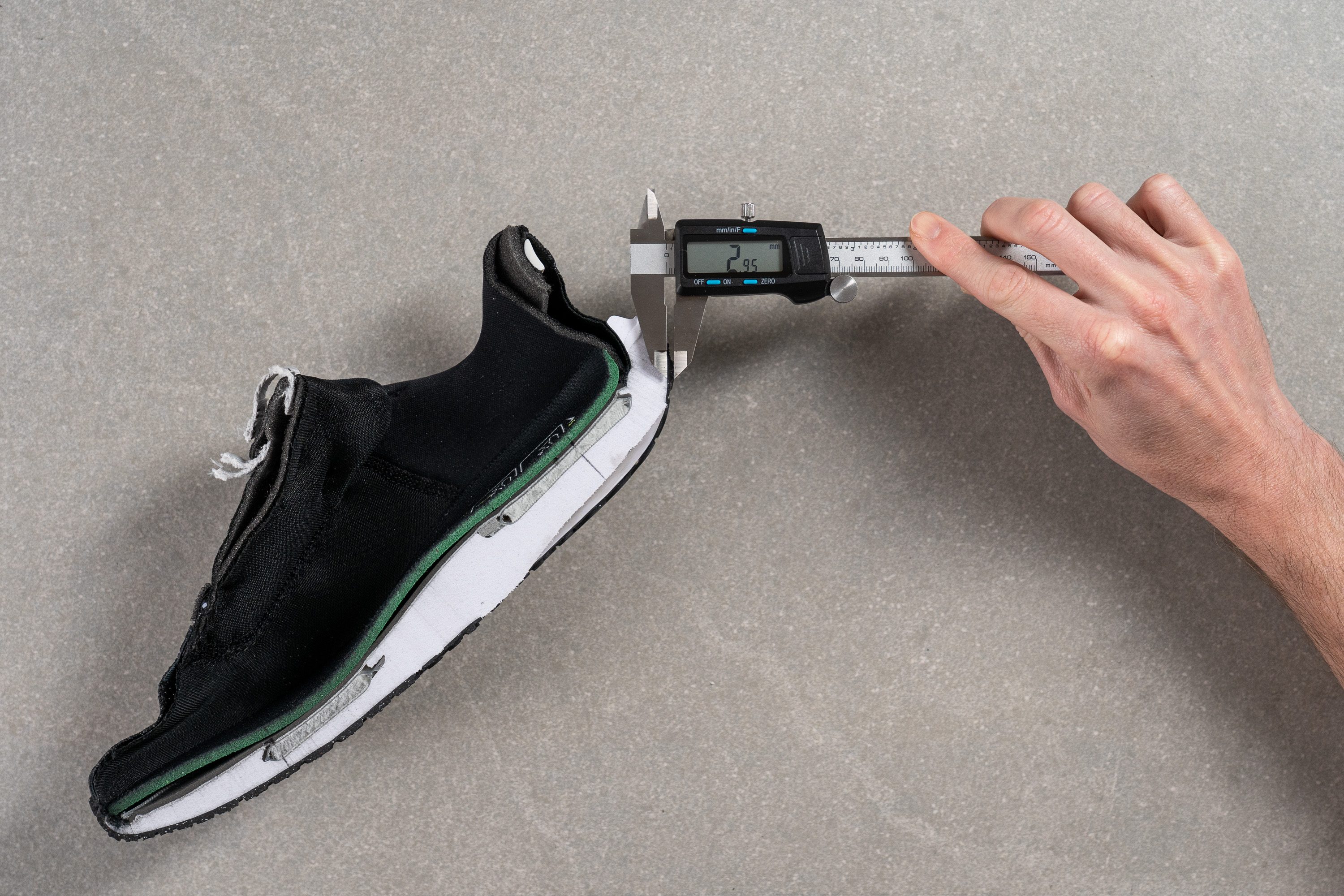
| Pegasus EasyOn | 3.0 mm |
| Average | 3.2 mm |
Misc
Insole thickness
Interestingly, although the EasyOn shares the midsole with the regular Pegasus, the insole differs—it’s thinner in this model, measuring just 4.1 mm. We believe this adjustment was designed to create additional room inside the upper.
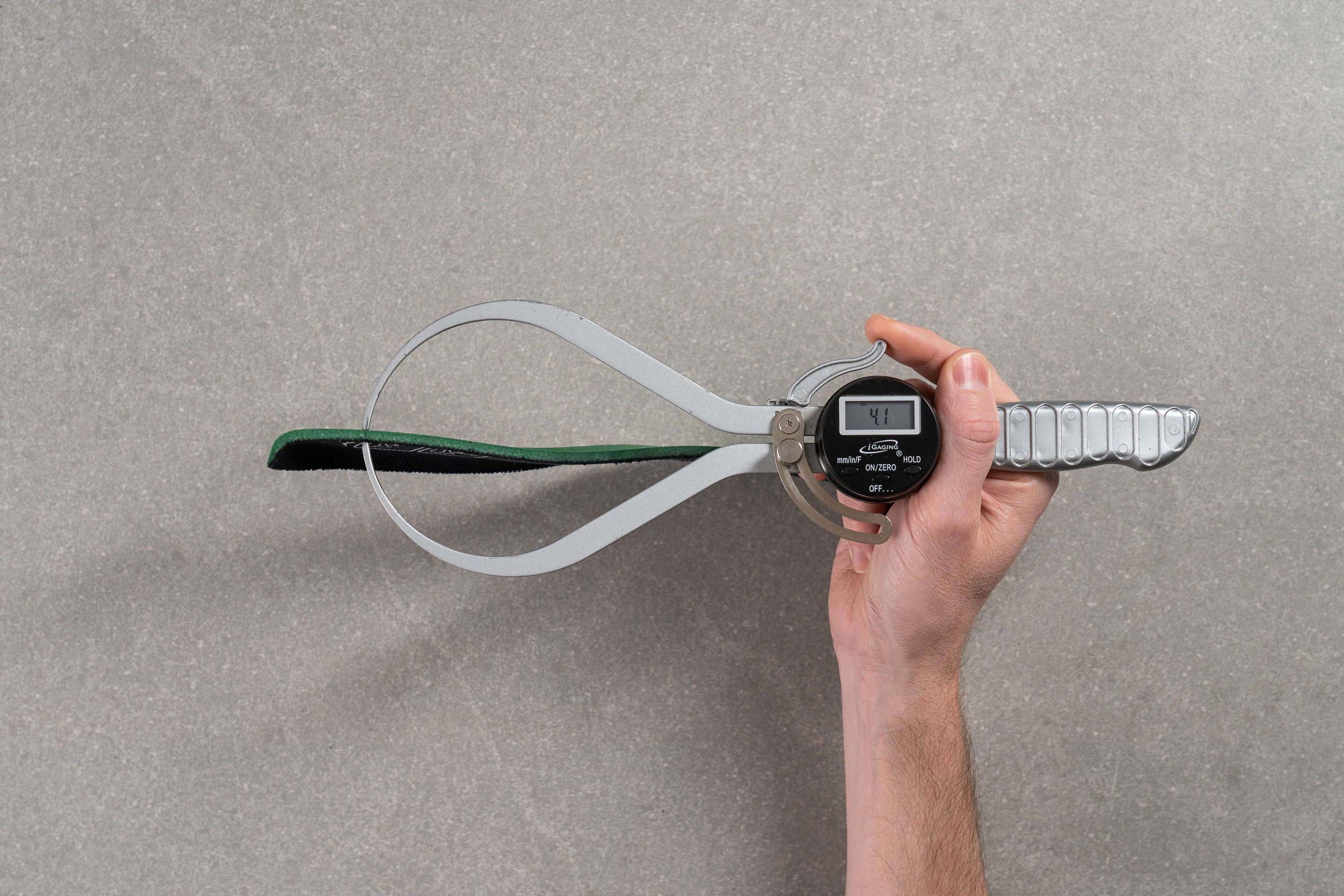
| Pegasus EasyOn | 4.1 mm |
| Average | 4.5 mm |
Removable insole
The insole is not only removable but also features the steps to use the shoe. And instead of a regular foot, it displays a prosthetic leg—a meaningful touch that highlights the EasyOn system’s design focus on accessibility for people with disabilities.
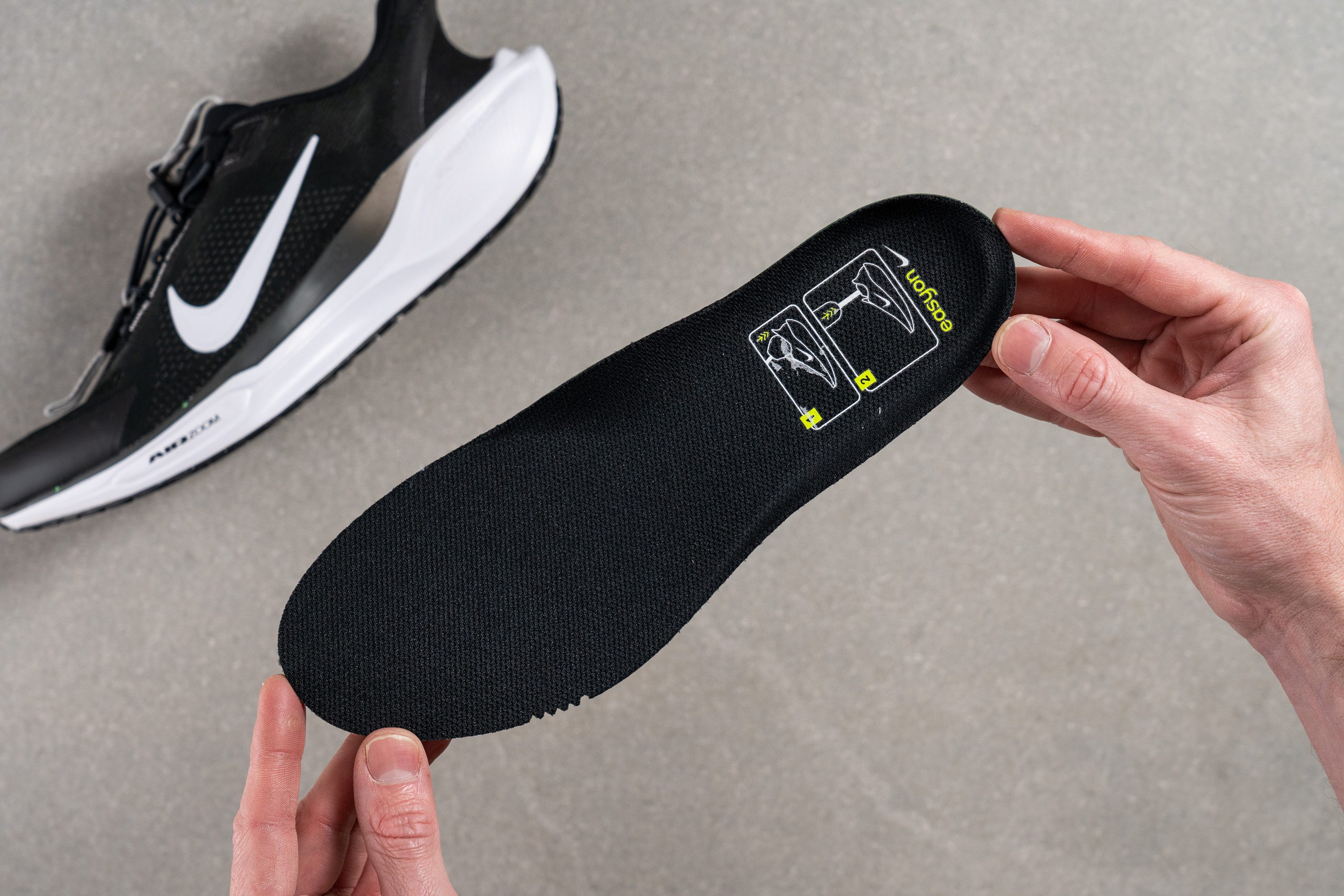
| Pegasus EasyOn | Yes |
Midsole softness in cold (%)
To evaluate the Pegasus EasyOn’s resilience in extremely cold settings, we placed it in a freezer for 20 minutes before re-testing its softness. After this deep-freeze test, we discovered that the ReactX midsole became noticeably firmer—registering a 34.4% increase.
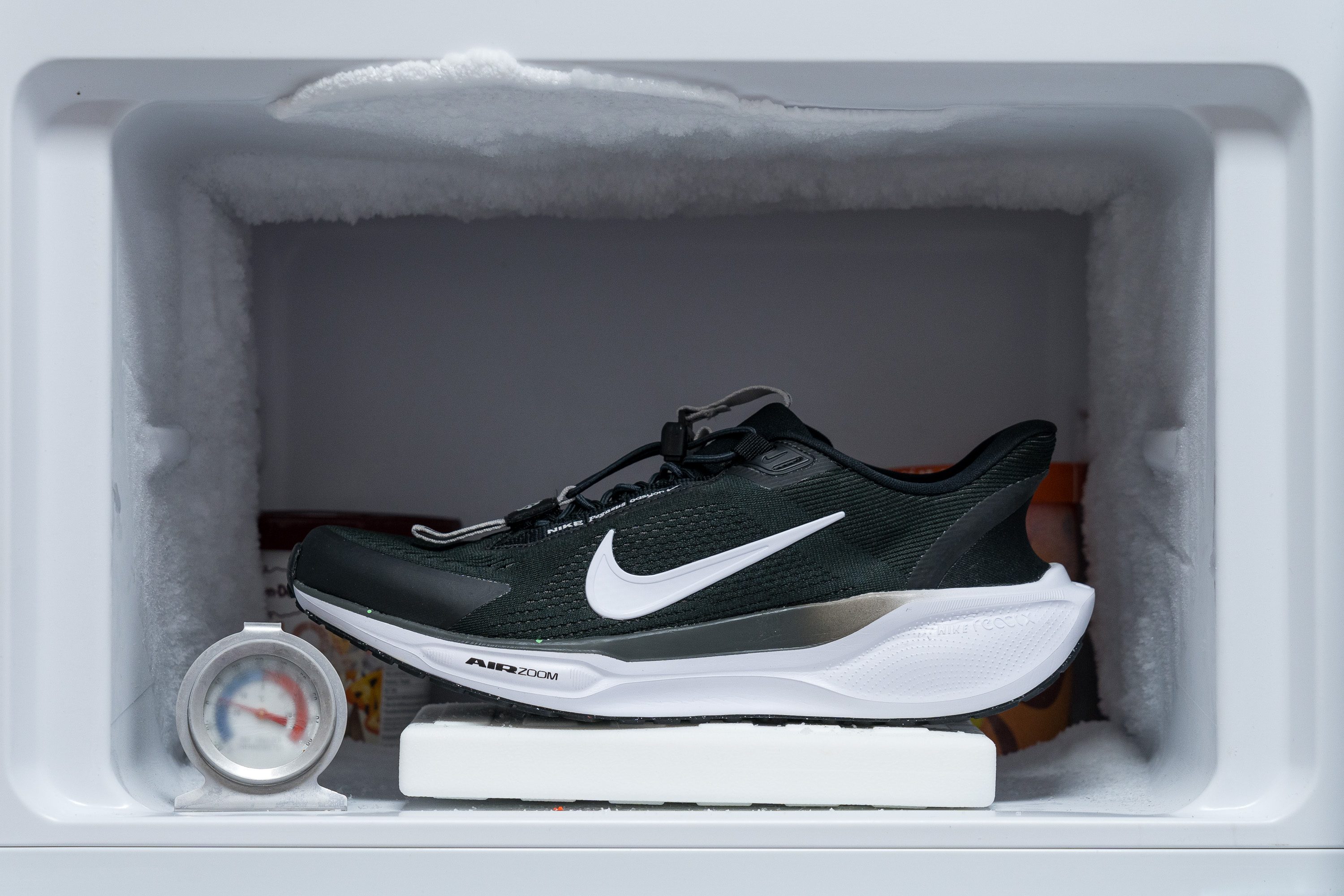
| Pegasus EasyOn | 34% |
| Average | 24% |
Reflective elements
Unfortunately, a downside of the EasyOn variant is the absence of reflective elements—a choice we found disappointing. Nike could have easily included them like in the regular Pegasus, but they opted not to, leaving the shoe without this safety feature.
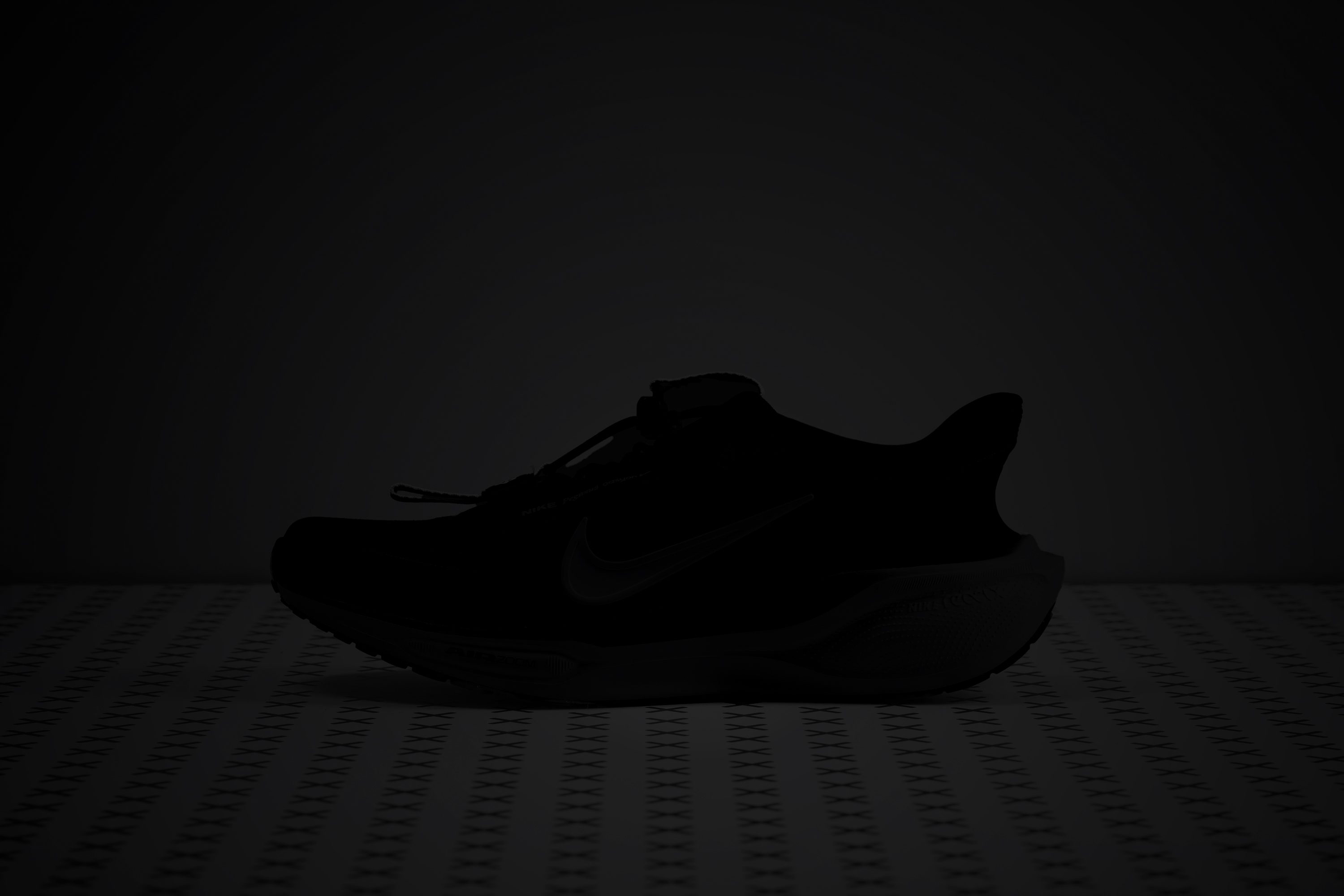
| Pegasus EasyOn | No |
Tongue padding
The tongue differs slightly from the usual design, but we found its 7.7-mm thickness sufficient to protect the instep from lace bite. That concern was minimized anyway, given the EasyOn lacing system’s limited ability to apply high pressure.
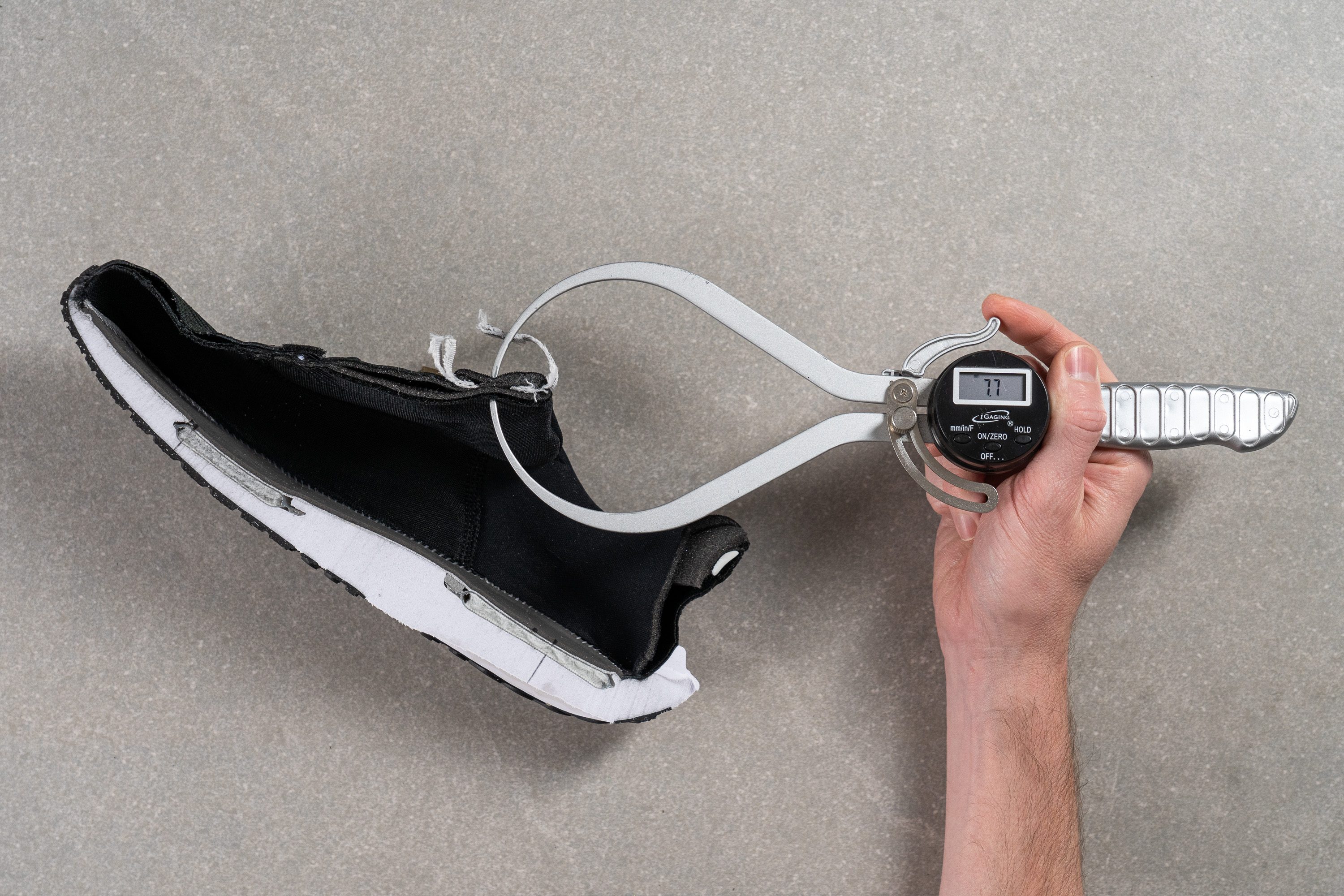
| Pegasus EasyOn | 7.7 mm |
| Average | 5.8 mm |
Tongue: gusset type
The tongue is securely fixed to the sides, allowing minimal movement—a crucial feature for the EasyOn system to function smoothly.

| Pegasus EasyOn | Both sides (full) |
Price
A common concern with special editions of running shoes is a potential price increase, but that’s not an issue with the Pegasus EasyOn. It matches the price of the Pegasus 41.
| Pegasus EasyOn | $140 |
Heel tab
While Nike could have added a heel tab to the Pegasus EasyOn, we believe it wouldn’t align with the design in this area. In our view, the minimalist, pull-friendly heel structure is already enough for easy entry.
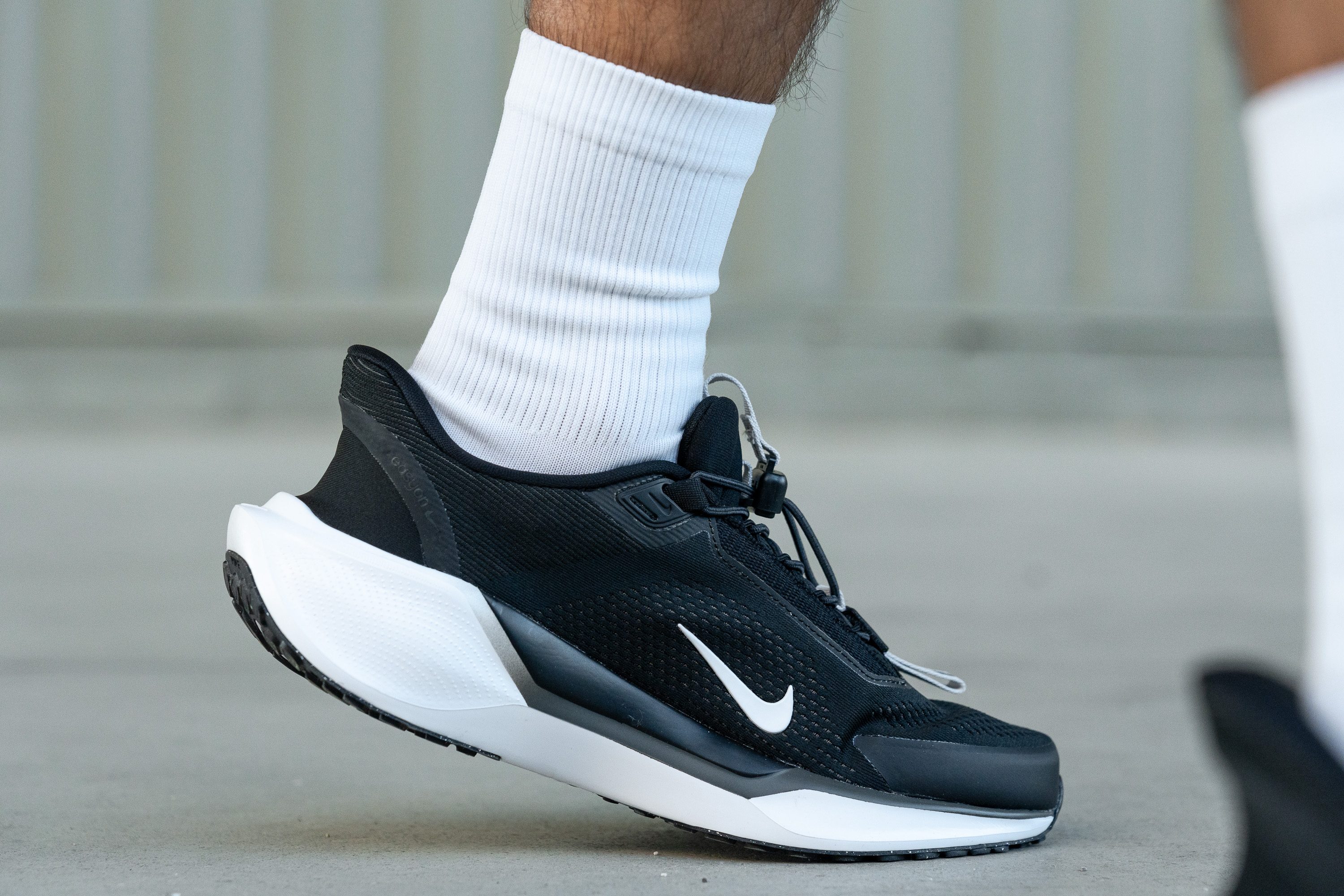
| Pegasus EasyOn | None |
Lacing system
Apart from the hands-free entry, the other standout feature of the EasyOn variant is its one-hand lacing system, which is incredibly easy to operate. Simply slide your foot inside, pull gently with one hand, and secure the elastic laces to the Velcro strap. It takes just two or three seconds.
When you get home, removal is just as simple. Pull the tongue tab to unlock, hold the heel counter, and slide your foot out. Once again, it only takes a few seconds.
